CRUISING WITH CAPT. KATE
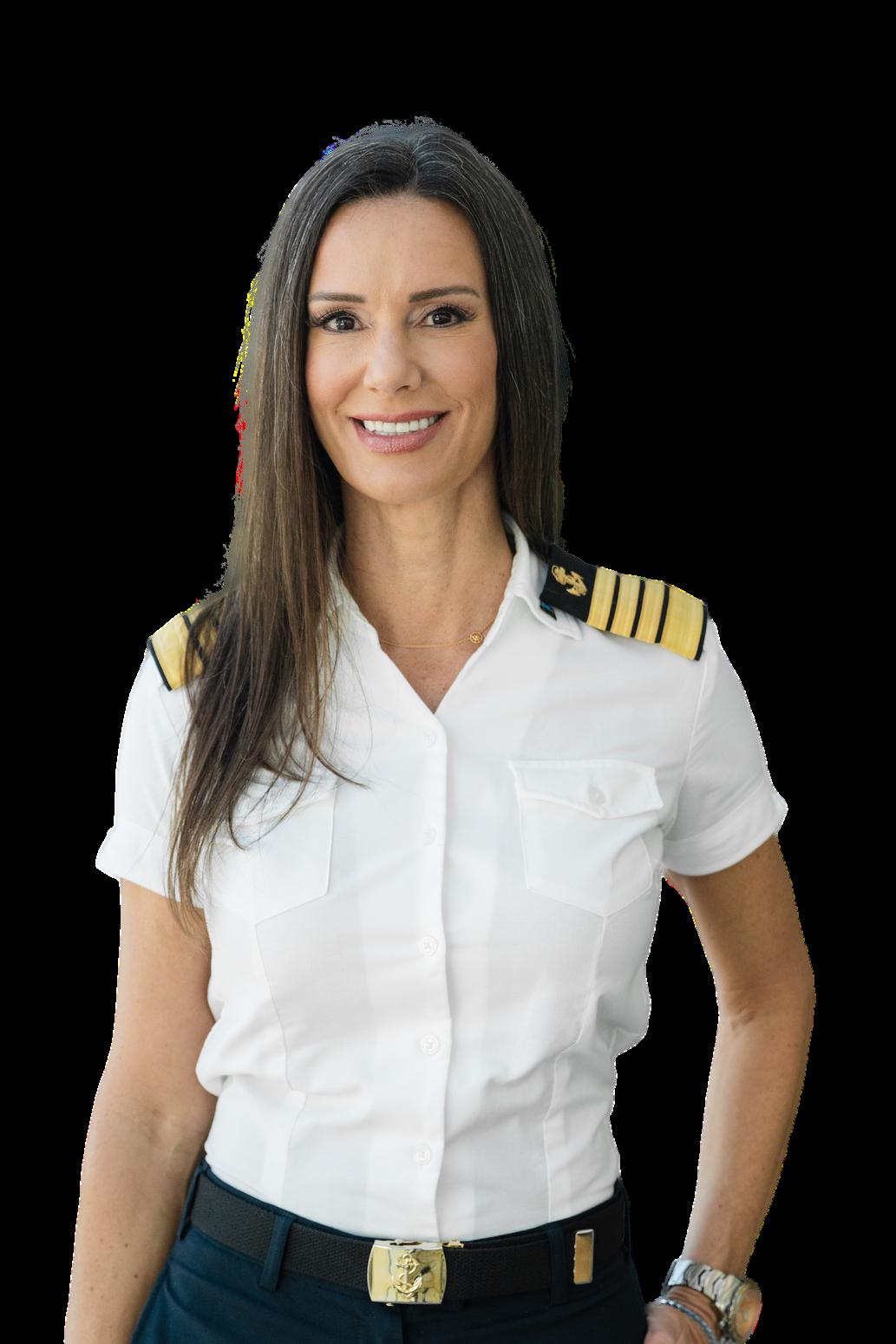

And many more...


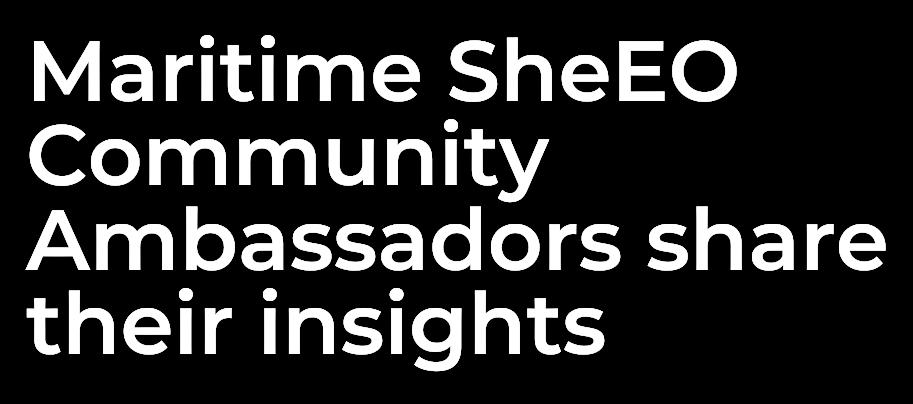
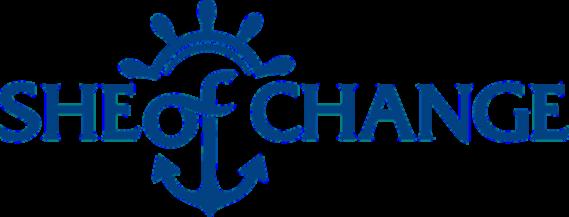
Issue 10 | June 2023

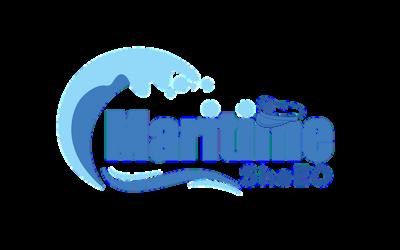
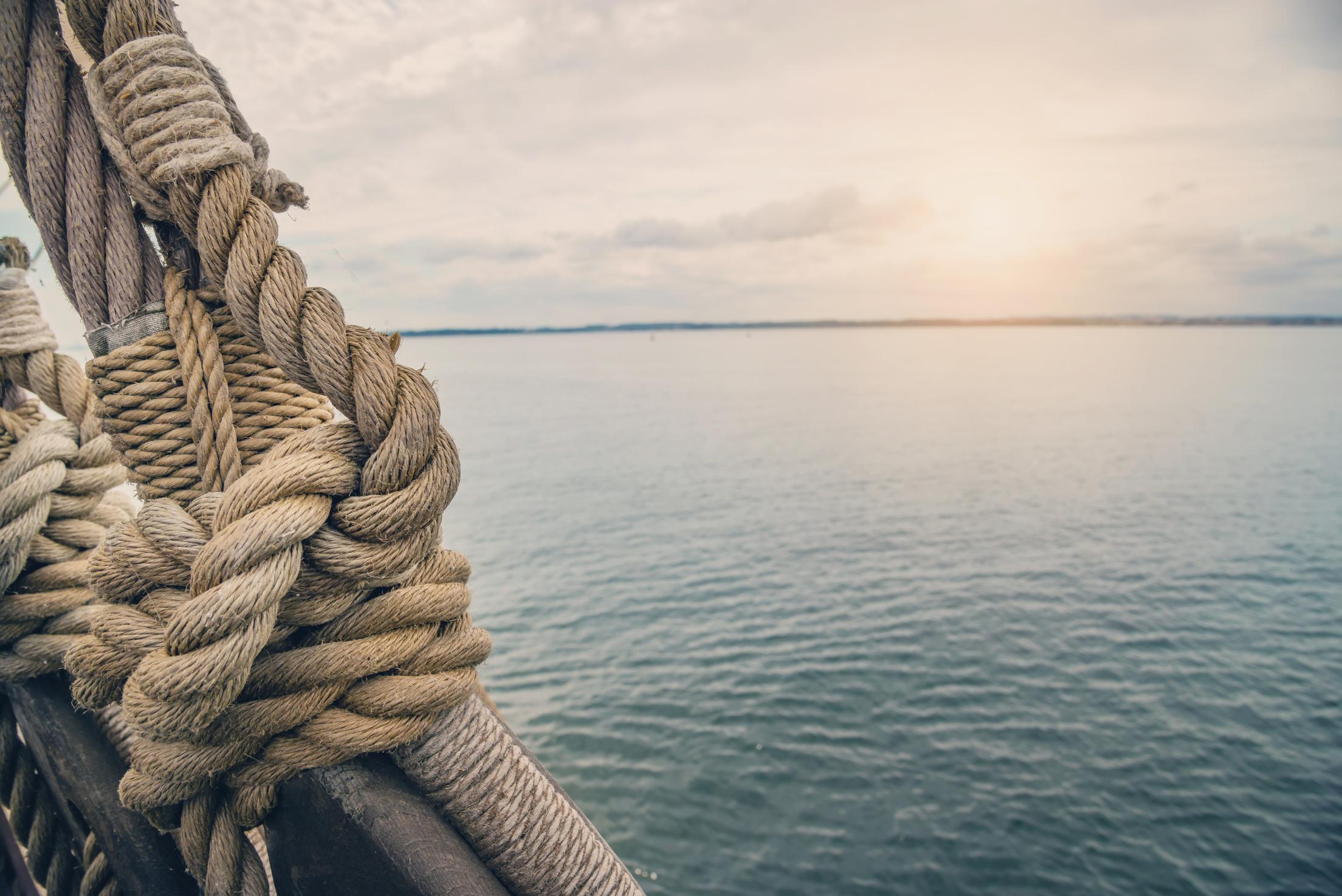
IN THIS ISSUE Page 02 - Issue 10 06 EQUALITY FOR WOMEN MEANS PROGRESS FOR ALL Capt. (Dr.) Ashutosh Apandkar 08 BREAKING BARRIERS AT SEA 4E Cassandra Zikmund 12 IN CONVERSATION WITH 1ST ENGINEER BHAGYASHREE OGALE HER JOURNEY INTO A SEAFARING CAREER 16 THE MARITIME SheEO CONFERENCE 2023 20 FROM DREAMS OF THE STARS TO NAVIGATING THE SEAS: MY JOURNEY INTO MARINE PILOTING AT THE PORT OF CAPE TOWN Lindile Mdletshe 24 CAPTAIN KATE McCUECREATING HISTORY AT CELEBRITY CRUISES 28 TÊTE-À-TÊTE WITH LETICIA Leticia Diaz 31 THE ON-SCENECOMMANDER DURING THE NATIONAL OIL SPILL EXERCISE Florence Jeruto Bet
32 MARITIME SECURITY IN AFRICA

Sophie De Sylvie Djoufa
33 DIGITAL TWIN TECHNOLOGY OF THE LOGISTIC SECTOR
Shimaa Abd El Rasoul
36 THE BBNJ CONVENTION - OVERVIEW AND EXPECTATIONS
Sonali Mukherjee
39 LIFE AS A SEAFARER

Ms. Paige Gordon
40 COMMUNITY SPECIAL!
42 EMBRACING THE FUTURE: HIMT'S VENTURE INTO THE METAVERSE AND VIRTUAL REALITY EDUCATION
44 VOICES OF THE MARITIME SHEEO COMMUNITY

50 HARNESSING THE POWER OF ADVANCED SIMULATION TECHNOLOGIES IN MARITIME OPERATIONS
Siti Fariya
Page 03 - Issue 10
IN THIS ISSUE
FOUNDER'S NOTE

Dear Readers,
I hope this note finds you well and filled with the same enthusiasm and inspiration I experienced at the G20 Women's Summit. It was an incredible event where I had the privilege of meeting delegates from various nations. I returned with a renewed sense of purpose.
I was given an amazing opportunity to speak on a panel discussion at the W20 Summit The panel, titled "Call to Action - Breaking the Glass Ceiling," aimed to address the barriers women face in reaching leadership positions and explore actionable steps to shatter the glass ceiling for all
During the panel discussion, I had the honor of sharing insights, experiences, and strategies on how we can collectively break through the barriers hindering women's advancement, with a specific focus on the maritime industry.
I highlighted the impactful work of the Maritime SheEO's Leadership Accelerator Program, which has provided support to over 90 women in leadership positions, enabling them to excel in their careers. With the support of WISTA International and the International Maritime Organization, we have been able to empower women and foster their growth.
I am immensely grateful for this opportunity and thrilled to contribute to the global conversation on gender equality at such a prestigious platform. The G20 Women's Summit and the W20 India Summit have reinforced my belief in the power of collaboration and collective action.
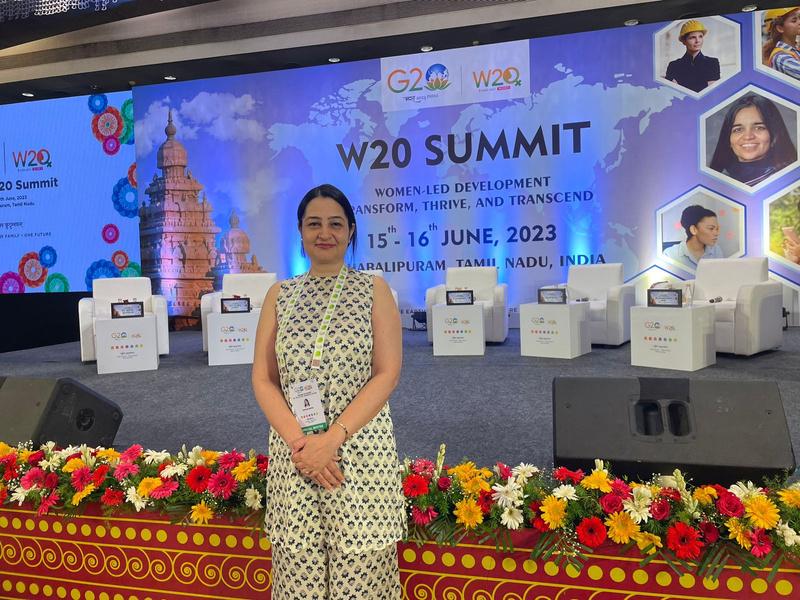
This issue of She of Change Magazine is released on the Day of the Seafarer, celebrating seafarers and their immense contribution to our industry.

I would like to express my deepest gratitude to the incredible team behind She of Change Magazine. Their dedication, creativity, and unwavering commitment to our mission have made this publication a reality.
To our readers, thank you for embarking on this journey with us. Your support and engagement are integral to the success of She of Change Magazine.
I encourage you to share your stories, ideas, and dreams with us. Together, we can create a world where every woman is seen, heard, and valued for her unique contributions.
Regards,
Sanjam Sahi Gupta
Page 04 - Issue 10
FROM THE EDITOR’S DESK
Dear Readers,
Greetings and welcome to the latest edition of She of Change.


To commemorate Seafarer’s Day, we have curated this edition to especially feature women seafarers who have left their mark in the maritime industry through their sheer determination to succeed and passion for the sea. These daring women have persevered in the face of adversity and have challenged the biases and cultural norms in their path. They discuss their maritime journey, life at sea, the rewards and struggles, and why they choose this profession.
Through these pages, many of them have also encouraged young women to choose a career at sea explaining why it is an immensely gratifying and fulfilling career choice.
Also presented in this edition are talented women who are maritime professionals from various countries holding important responsibilities. They speak about their insights and experience of working in this sector and the positive impact they are creating Some have also spoken about the initiatives taken by them to promote an inclusive environment (DEI) in their respective organizations.
Capt Kate McCue, a true trailblazer and the first American woman Captain in Celebrity Cruises is showcased on our cover page. Her story is extraordinary and will undoubtedly inspire you.
Our regular feature, Pilot Diaries features Lindile Mdletshe, who is an accomplished Harbour Pilot in Cape Town, South Africa.
Lindile tells us about overcoming challenges to finding a sense of purpose in her pursuit to become a Marine Pilot.
We hope that the two articles in this edition, "The Digital Twin Technology in the Logistic Sector" and "Advanced Simulation Techniques used in Ports," will be informative.
In addition, you will also find many other articles and narratives to keep you captivated right through the last page.
Before signing off, we take this opportunity to salute and thank all seafarers for their dedication and hard work.
Regards,
Loretta Fernandes
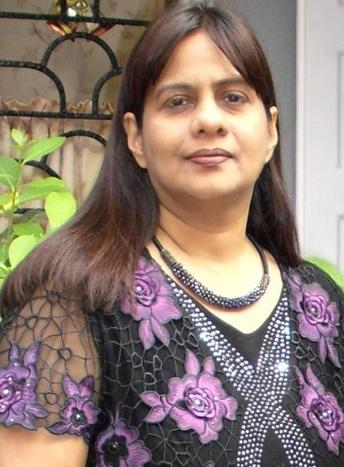
Page 05 - Issue 10
EQUALITY FOR WOMEN MEANS PROGRESS FOR ALL
Capt. (Dr.) Ashutosh Apandkar Captain Superintendent/ Principal at Training Ship
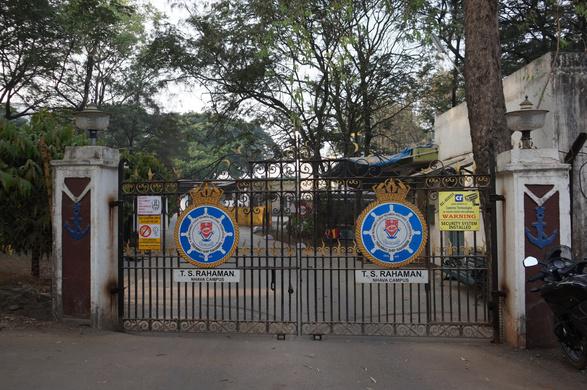
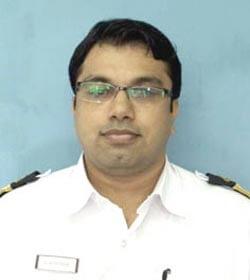
In the 21st century where we all follow the principle of "Vasudhaiva Kutumbakkam," meaning "World is one Family," gender equality, gender balance, inclusive business environments, and improved working conditions are of utmost importance. They not only drive economic growth but also create value for businesses themselves.
There is abundant evidence that investing in women is the most effective way to uplift communities, companies, and even countries Countries with higher gender equality experience better economic growth. The evidence is clear: equality for women means progress for all.
Currently, women represent only 1.2% of the global seafarer workforce, as per the BIMCO/ICS 2021 Seafarer Workforce Report. However, there is a positive trend towards gender balance, with the report estimating a 45.8% increase in the number of women serving as seafarers compared to the 2015 report, totaling 24,059 women.
In our historically male-dominated industry, the International Maritime Organization (IMO) has been making concerted efforts to support the advancement of women and achieve a representation that aligns with the expectations of the twenty-first century Through its Women in Maritime program, under the slogan "Training-VisibilityRecognition," IMO has strategically aimed to enhance the contribution of women as key stakeholders in the maritime sector IMO
continues to support the participation of women in both shore-based and sea-going positions.

Training Ship Rahaman (TSR), as a maritime training institute, acknowledges and supports IMO's commitment to achieving the United Nations' 2030 agenda for Sustainable Development, particularly Goal 5: "Achieving gender equality and empowering all women and girls." TSR's vision is to motivate and improve women's representation in the maritime industry.
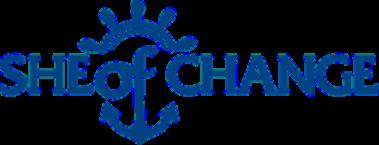
Page 06 - Issue 10
"Rahaman"
Driving the gender equality program, TSR has been admitting women students since 2002 and has trained approximately 100 women to date, helping them establish their careers in the maritime industry
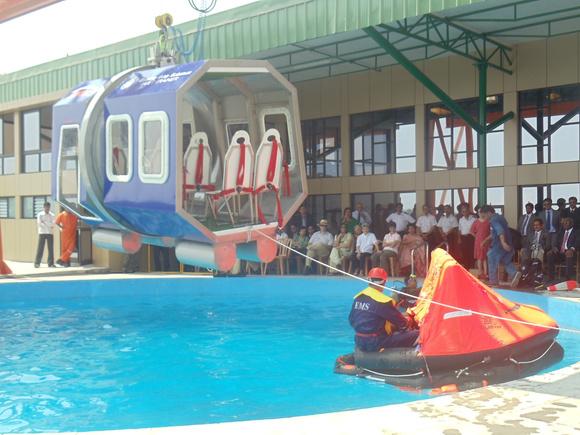
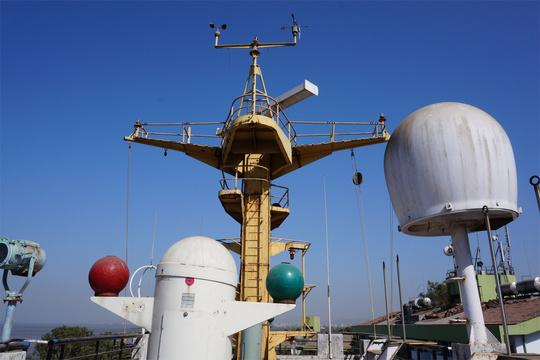
TSR promotes gender equality and women's empowerment through gender-specific fellowships, facilitating access to high-level technical training for women in the maritime sector and creating an environment that identifies and selects women for career development opportunities. TSR is committed to providing high-quality training and services that meet customer expectations and aspirations.
TSR has the following:
1. Dedicated Women’s hostel with Woman Warden
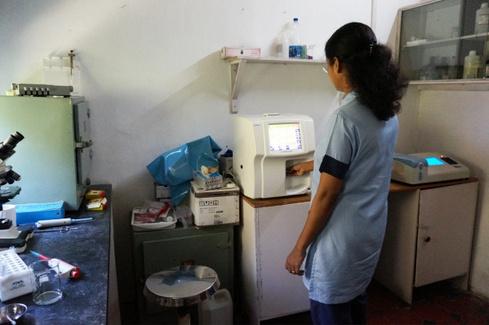
2. Women's development cell (to resolve the women candidate issue) headed by women teachers with direct access to management.
3. Suggestion / complaint box in the campus for addressing grievances and their suggestions, anonymously.
4. Gender Sensitization training to all Faculties and on Campus Staff.
5 “Woman In Shipping” career guidance and assured placement campaigns in collaboration with global shipping companies pan India
6. Regular student training and promoting parity at governance level.
The financial support we offer women are:
Full program scholarships awarded to the top 5 meritorious girl students.

Financial support by Maritime Training Trust (MTT) of Directorate General of Shipping, (Ministry of Shipping, Govt. of India) of Rs 50,000/- per annum scholarship to each Indian Woman Seafarers who are undergoing pre-sea courses in the DGS approved Maritime Training Institutes (MTIs).
MoU between Training Ship Rahaman and Bank of India supporting deserving students with Educational Loan.
Our Vision, Mission, and Values are:
Commitment towards high quality training and services meeting customer expectations and aspirations. Caring for people ensuring zero accident / incident while achieving course objective. Maintaining Integrity and value for the name.

Page 07 - Issue 10
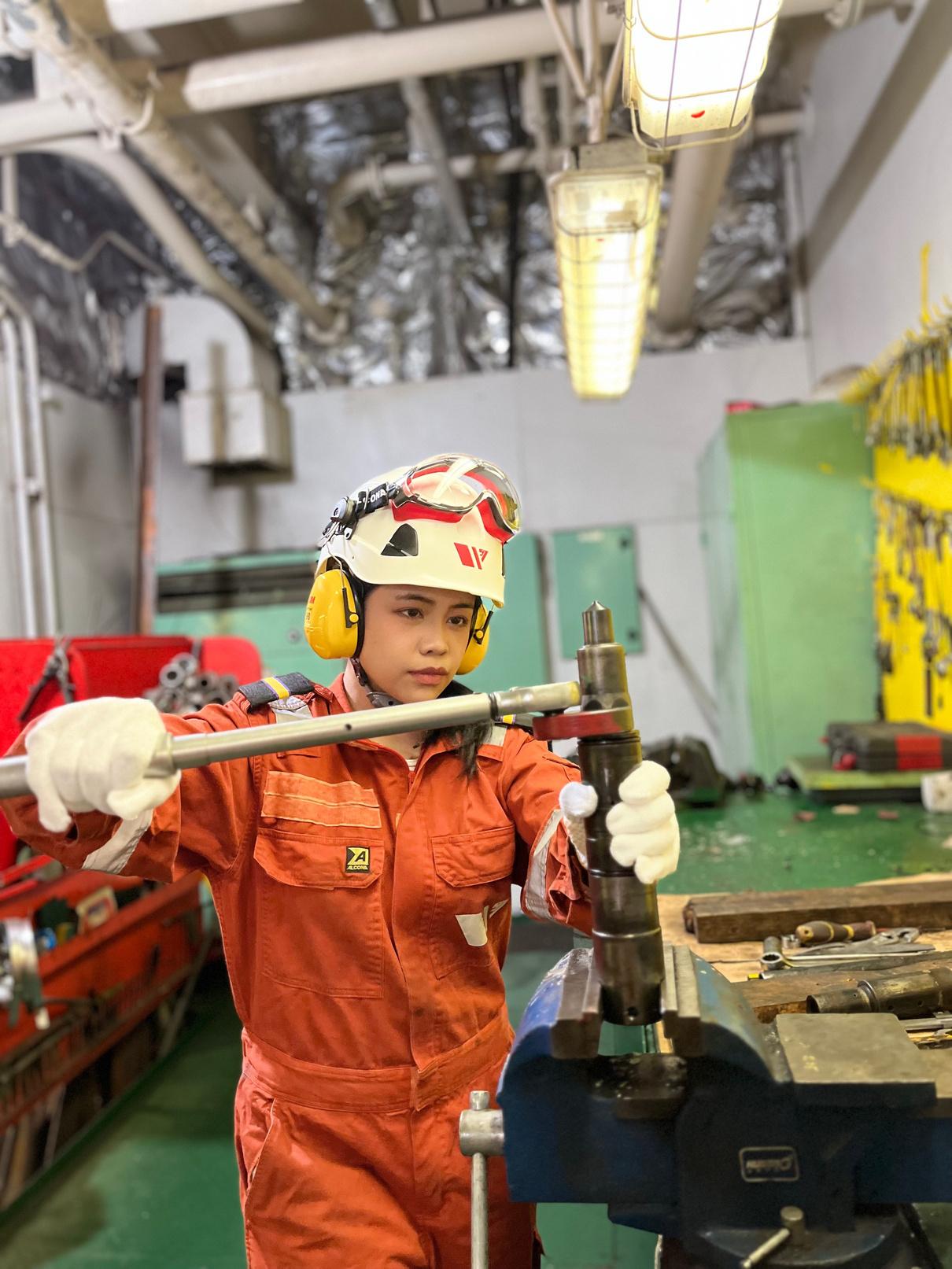
BREAKING BARRIERS AT SEA
4E Cassandra Zikmund Seaspan
Management LTD

I've always been competitive. I think a lot of it comes from how my parents have raised me, being the eldest daughter and first grandchild in a stereotypical Asian family
From a very young age, I have always been made to believe that I am destined for great things in life And that belief brought me to where I am today, in this initially scary and unfamiliar career choice for our family. I once referred to it as "a profession of epic proportions" during my first contract on the Seaspan, MV YM Winner, one of the company's largest ships
It has been quite a task to explain the nature of my profession to my family. I mean, imagine, there isn't a seafarer on either side of my parents' families At the time, I found myself dumbfounded by the multimillion-dollar cargo, fuel, machinery, and the ship itself that is entrusted to the people on board. Now, as a fourth engineer, I am one of those expected to fill very big shoes on board a ship, and I do not take this responsibility lightly.
But no matter how enormous my responsibilities may seem, I genuinely enjoy it There is a sense of satisfaction and purpose whenever I fix something that has been broken. I take delight in constantly learning something new at work. I am still amazed by how intricate the machinery and systems are
However, being a woman in a male-dominated profession comes with many challenges. I mean, seafaring in general is not for everyone, and this holds true for all professions it's not a
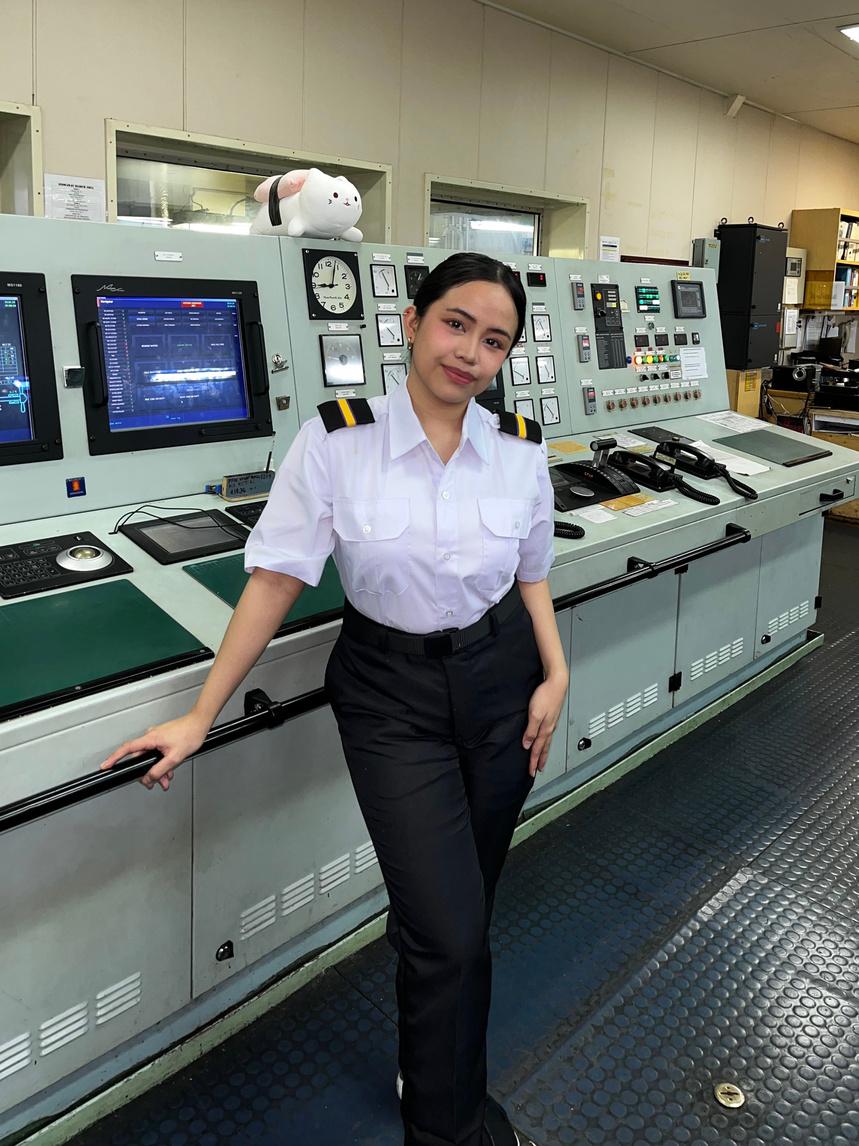
one-size-fits-all kind of thing.
One of my initial and ongoing challenges is dealing with heavy weights. But I have learned to use lifting equipment and specific tools for heavy work. I am also grateful for the techniques I have learned from the people I have worked with
Secondly, it's difficult when you feel that there is still a stigma against women in this field. While it is not as common now as it was before, it still exists and can be felt from (some) colleagues.
It is true when my mentors told me that I have to work five times as hard to prove myself, impress others, and change any negative preconceptions they may have.
Lastly, but certainly not least, an issue I have faced, as have all female seafarers, is sexual advancement that sometimes even crosses the line into sexual harassment.
This is not something everyone is ready to hear, but I would like to take this opportunity and

Page 09 - Issue 10
Ship
Cassandra Zikmund's Journey as a Female Seafarer
use this platform to raise awareness about it It's a hard truth to swallow, but not everyone who has experienced it has had their voices heard or seen rightful actions taken.

Despite these challenges, I would like to express my appreciation to the company for making an effort to personally inquire about how they can better support their women seafarers and even invite more women to join the company.

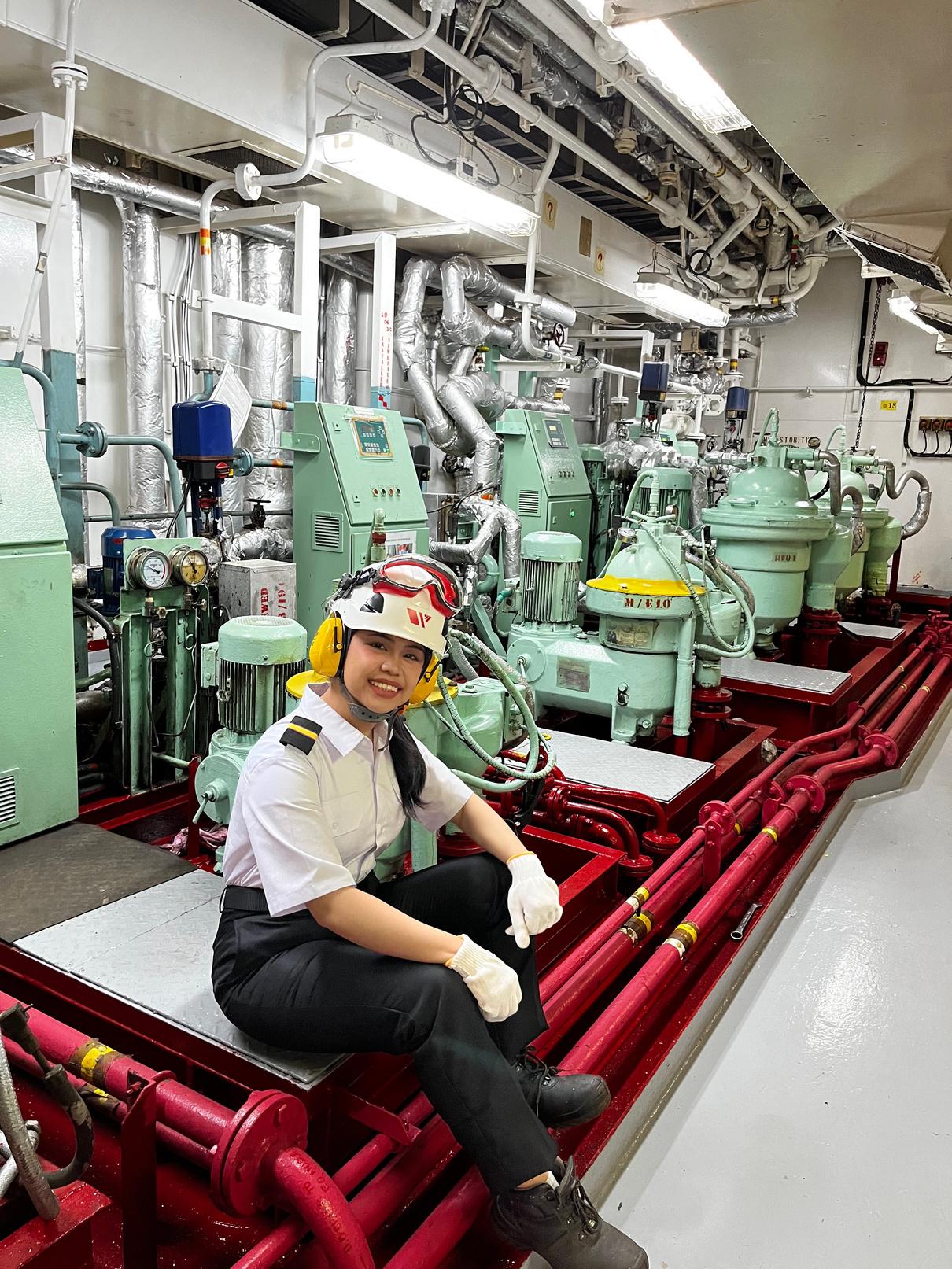
So, to all the goal-oriented, high-achieving women out there like me, take a look at seafaring It may not be for everyone, but it might be for you. I have quite a few reasons why, and here are some of them: I have worked with mostly great people, and harassment is not taken lightly there are procedures in place to handle it
While the culture and stigma still exist at times, they are not as prevalent now, and discussions about them are ongoing. You get to travel a lot, experience different cultures, and live a life that is far from monotonous It's an adventure, honestly. It can be challenging at times, but it is highly rewarding.
To my co-seafarers out there, let's continue to take this field by storm, and inspire even more to join us.
I’m excited for the time when there will be more and more women in the top four on board ships
Page 10 - Issue 10

Marta ApariCio
IN CONVERSATION WITH 1ST ENGINEER BHAGYASHREE OGALE Her Journey Into a Seafaring Career
Bhagyashree Ogale
1st
Engineer, Teekay Shipping

In this interview, Bhagyashree discusses her seafaring experience and offers some guidance to women thinking about a career at sea.
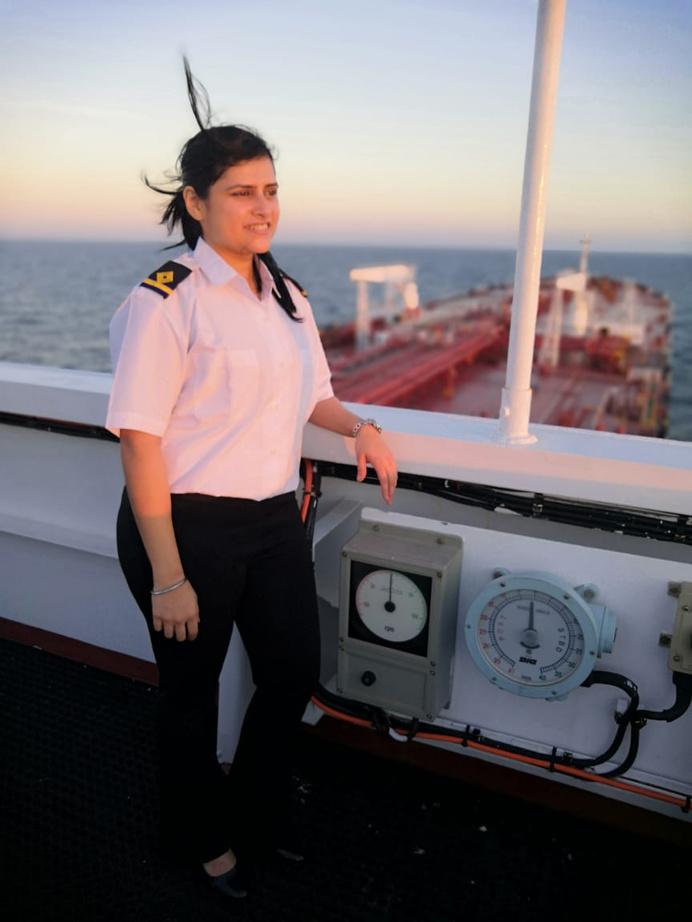
Can you tell me about your background and how you got into the merchant navy?
I was born and brought up in Pune (India). I currently sail as a 1st Engineer having recently cleared my MEO Class 1 examinations. I also received an award from the Directorate General of Shipping for the youngest girl to clear MEO Class 4 in the year 2014.
My father was a Chief Engineer. I had sailed with him as a child and ever since I've been fascinated by the sea and this profession. As I grew older, my father retired from the sea and wanted to start a business in Pune. I decided to assist him with this venture. To gain a better understanding of his business, I opted to study maritime engineering, which is how I got into this industry.
I attended an all-girls school till the 10th grade and then my life took a 360-degree turn when I decided to join an almost all-boys collegeTolani Maritime Institute to start my sea career. We were a batch of 5 girls in the midst of 340 boys Our teachers at the college were instrumental in helping us feel a part of the class and not like the odd man (or woman) out.
I was awarded a scholarship from the Manbhav Trust at Tolani Maritime Institute for academic excellence In my third year at the institute, I

was selected by Teekay Shipping through campus interviews and have been sailing with them ever since.
What do you love about sailing the most?
The word 'ship' makes me smile. It's like my second home. Whenever I'm signing on a ship, I get butterflies in my stomach like everyone else But when I enter the engine room, I feel I am at peace. I love working with my hands. Every piece of machinery that I look after or I troubleshoot feels like I've given new life to it. Sailing gives me job satisfaction.
The ship and the sea have been the greatest teachers in my life in making me confident enough to believe in myself and to face any kind of problem head-on. They teach you to remain calm in the most adverse of situations
Page 12 - Issue 10
The profession inculcates discipline in a person's life.
What are the most important qualities to become a seafarer?
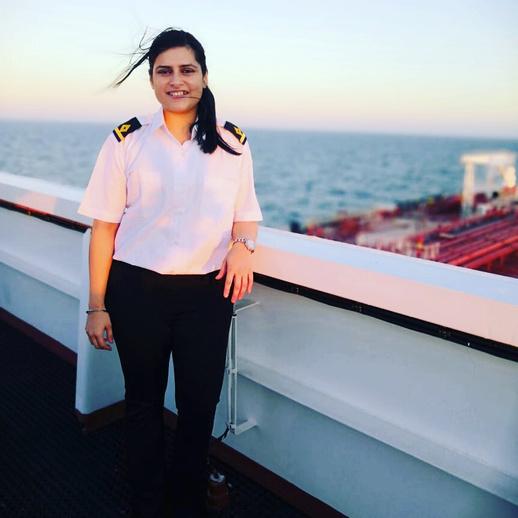
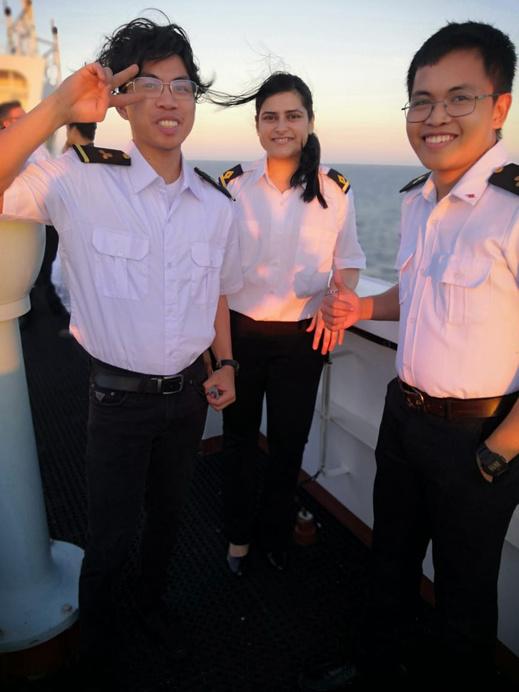

When you join this profession you must have dignity of labour which a lot of us do not have, since we come from affluent backgrounds
On the ship, there is nothing like 'extra help'. We have to help each other and treat the ship like our home and do whatever is required to make it run smoothly This may entail all jobs right from moping and sweeping to troubleshooting machinery. We must respect our profession and understand that the money we get is not easy money. It is hard-earned money from being on call 24 x 7 to working long shifts, to doing anything and everything in our power to prevent the ship from stopping.
Tell us something about your day-to-day routine on the ship?
I work as a First Assistant Engineer in Teekay Shipping. So managing the entire engine room is my job I begin the day by assigning jobs to the rest of the engine room team
While assigning jobs I have to make sure which tasks are critical and have to be done immediately and which can be done later The planning and delegation of jobs is essential for the ship to function smoothly.
I inspect that all the tasks that are being done are done safely while taking all precautions as well as putting up safeguards against any identified risks. I also have to make sure that all oil and water transfers in the engine room are done correctly and are entered accurately in the oil record book
At the end of the day, I get an update from the team about the jobs done or any difficulty faced and how it is to be solved and accordingly plan the tasks for the next day

Another important quality we must have is the ability to never give up Life on the ship isn't easy and it isn't fair and a lot of times quitting seems like such an easier option. But one must realise that growth lies only after overcoming hardships.
Life isn't about the destination. It is about the journey that led you to the destination. Knowledge is your biggest asset. One must keep educating themselves and be willing to learn new things in this ever-evolving world of shipping
Page 13 - Issue 10
Can you share a particularly challenging situation at sea and how you handled it? When I joined my first ship, I was so eager to learn new things, see the big machinery work, work with my hands and put everything I had learnt in college to full use.
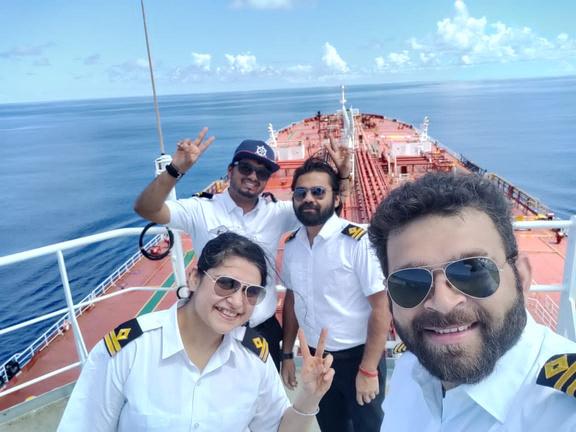
But the first thing I was told was to do the moping and sweeping on the ship. I had heard that cadets are expected to do this in their first month when they join a ship.
However, for the entire contract period, I had to spend my days only doing the moping, sweeping and painting because my seniors thought that it would be a waste of time to teach me anything since I would get married and leave in a couple of years. I used to feel really bad and I lost confidence and was low on morale I was thinking of giving up but my parents had always taught me that quitting was never an option.
My seniors’ attitude made me want to prove to everyone that I deserved to be taught and taken seriously, so I kept reading up manuals and educating myself in my free time. The next set of seniors on the vessel that I came across were non-biased and realized that I really wanted to learn They took a lot of interest and spent time teaching me which kept me motivated and I really fell in love with my job.
How do you spend long periods away from home and stay motivated and maintain your morale when onboard?
I love my job. My true passion lies in working with my hands
My motivation for working on a ship is neither the money I earn nor the many destinations I visit. My incentive for going on the ship is the opportunity to work with my hands on the machinery that I like. The high of troubleshooting different problems on board motivates me to work on the ship. My motivation for joining the ship is to make it a
little better in all aspects than it was the day I joined it. I miss my family and friends, but the onboard WiFi makes life easier.
Can you discuss any particularly memorable incident while on the ship?
We were facing an issue with one of the generators synchronizing automatically. Technicians had been called to solve it but could not solve the problem Finally, the chief engineer told me to work on this task along with him and approach the problem as if it was a project.
We brainstormed over the problem for 3 days, starting with the basics and went on to consider all possible scenarios. We were discussing the problem in the engine room, during our breaks, going to the engine room early to test our theories.
Nothing was on our minds except the generator and its problem. Finally, on the 4th day, we cracked the problem and found a solution to it. The high that I got when we discovered the problem and its solution was something I’d never experienced before.
How do you maintain safety and compliance with regulations on the ship?

My company Teekay Shipping has always considered safety as its first priority. Since I was in this company from cadetship, safety has

Page 14 - Issue 10
been ingrained in me from the beginning and it has become a part of the work culture. From the very beginning, we are taught to think about “safety” and behave safely. It is also one of the commitments that we sign when we start our contract and it is non - negotiable. As compliance with regulations is a part of safety itself, they go hand in hand and that's how regulations are complied with positively.
How is the industry evolving and how will you update yourself?
The industry is moving towards making ships and their operations more environmentally friendly. The industry is also evolving and trying to make the ships more autonomous. I feel in an ever-changing industry like shipping the only way to survive is to adapt to the changes and develop a skill set that will be necessary and considered as an asset in the future.
I would like to explore the field of electronics, automation and AI and acquire the skills to deal with the newly developed machinery which uses AI and automation. I am also interested in studying and researching machinery using alternative fuels which is the future of shipping.
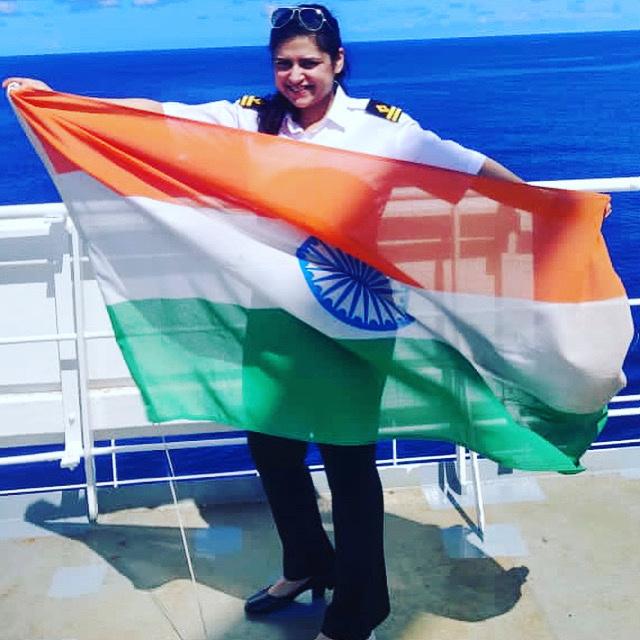


What advice would you give to a new seafarer?
If you like working with your hands, this is the field to be in. Do not come here for the money or the wrongly projected aspects of the merchant navy that are shown on television One should come to sea for job satisfaction and to lead a life of discipline and growth. Keep your mind open to learning and also keep educating yourself. Understand the dignity of labour and respect it Be confident and have respect for what you do.
Page 15 - Issue 10
The Maritime SheEO Conference 2023
Diversity for Innovation and Growth

The Maritime SheEO Conference 2023 will be a hybrid event with delegates and virtual attendees from all over the world This year we estimate over 200 attendees and over 2000 people to stream online.
Meet People Who Inspire
It is an excellent platform for inspiration, advice, and networking. You’ll find great connections and learning opportunities for women in any vertical of maritime.
Gain valuable insights
Every speaker has their unique perspectives to share. All the women featured in this event have made changes in remarkable ways will share their insights with you. Be inspired by discussions with successful women leaders
Remembering What Motivated YOU to Start
The event this year has a special emphasis on leadership. We all have our motivations to start our business, however over time these can change Sometimes it's important to take yourself back to your original motivation and help you learn from other leaders!
Fun – Lots of it!

We’ve found a way to make the conference fun and exciting. From breaks in between sessions, to the evening of cocktails, we have found an engaging way to make connections with everyone. And honestly, after all the hard work you put into your role – you do deserve the break.
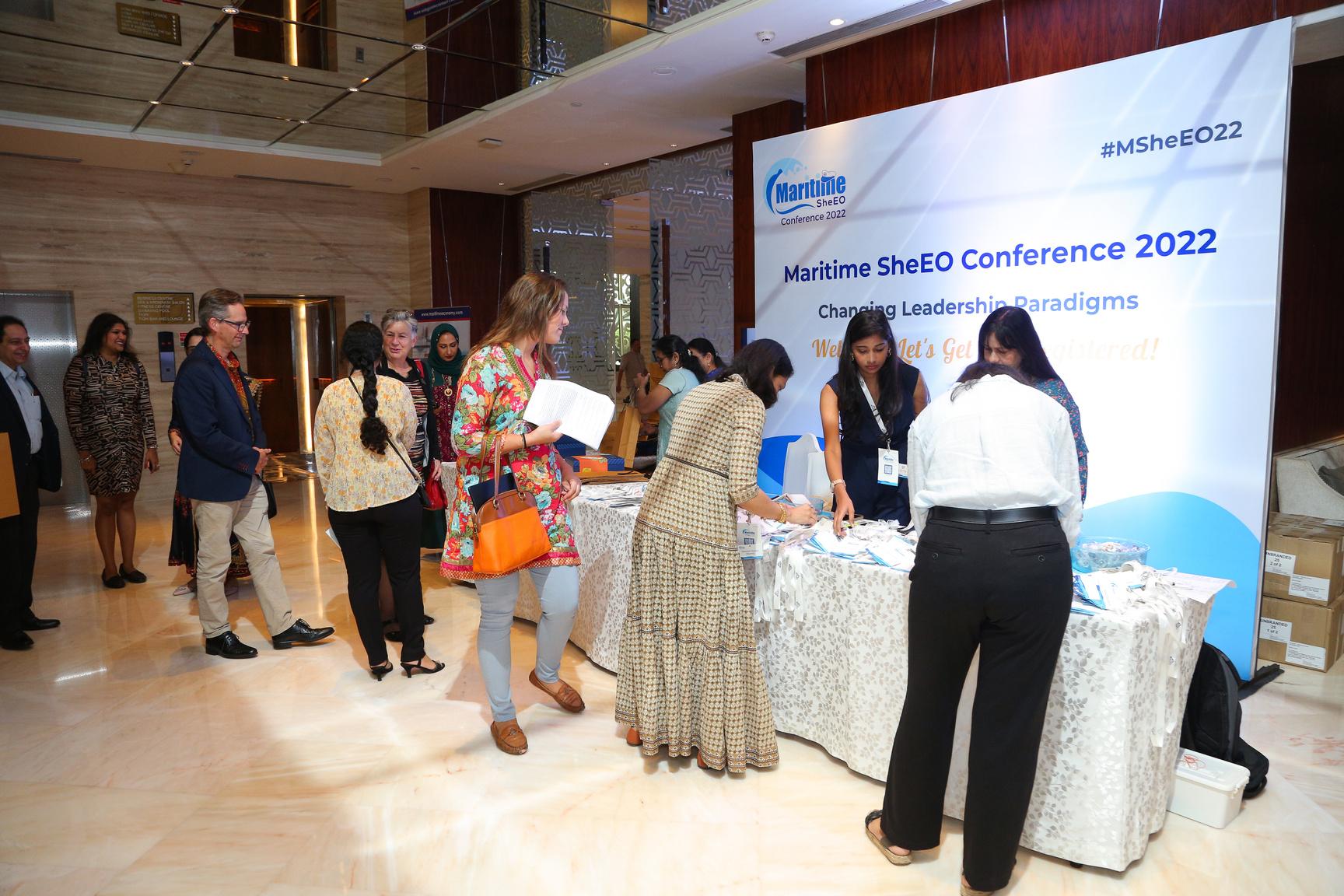
Page 16- Issue 10
Best Practices in Diversity - Since 2020, Maritime SheEO has been presenting these Awards to Companies that have inculcated best practices in their firms.
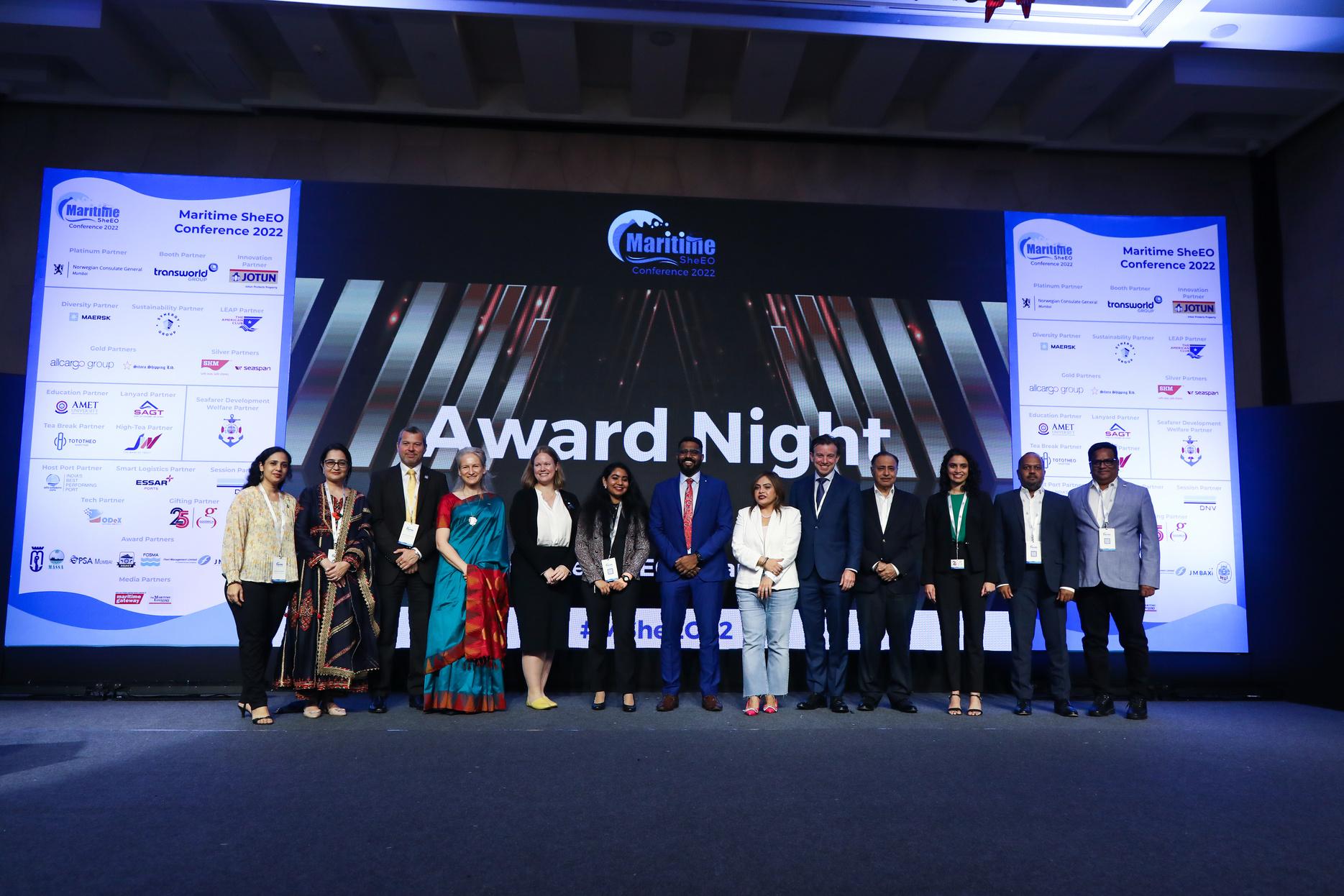
Best Practices in Sustainability - A company that has proven sustainable practices is eligible for this award

Most Diverse Board - Companies that have the most Diverse Boards with either 50% or more Women will be considered for this award.
Individuals can apply for the following awards:
SheEO to Watch Out For - Women in the marine business who are excelling in their jobs and show the potential of reaching the top in their careers are eligible.
SheEO of The Year - For excellent leadership in a company.
Champion of Diversity - This award is for Men who have gone above and beyond to ensure that women's voices are heard.
SheEO Entrepreneur of the Year - For women with their own businesses who have crossed milestones in their own right.
Brilliant SheEO - Nominated by Association - This special award will be presented to a woman who has been nominated by a Maritime Association.
We have two additional categories for which we do not have any nominations open and winners will be selected by a Jury.
Applications are now open!

Page 17 - Issue 10
Registrations are opening soon!
In your pass, you will have access to: Added Bonus!
Access to the entire event
Be amongst the C Suite; top management of shipping ports and all verticals in maritime Attend panel discussions on important topics with high profile speakers
Watch virtual sessions from change makers in the Maritime industry

Special networking hours where you could interact with the Who's Who of Maritime
Meet companies who have partnered with us and are advocates of diversity
Celebrate with companies and change makers who receive our coveted award for various categories
Attending would show your dedication to diversity and sustainability
You attend a conference that aims to be carbon neutral
Photo opportunities with international and senior delegates
A surprise booth created to help foster diversity.
Early Bird - Single Ticket
Be rewarded for your enthusiasm! Receive a discount of INR 2,500 and access to all insider news
INR 7,500 + GST
General AdmissionSingle Ticket
Attend our full-day conference and get all the perks mentioned above
INR 10,000 + GST
General Group Ticket
Early Bird - Group Ticket
For diversity enthusiasts in a group of 3+ people Receive a discount of INR 4,000 per person
INR 6,000 + GST per person
Reserved Table
Attend our full-day conference and get all the perks mentioned Receive a discount of INR 2,000 per person
INR 8,000 + GST per person
Association Discount!
Reserve a dedicated table for 8 of your delegates This package gives you a discount of INR 20,000
INR 80,000 + GST
Maritime SheEO Community Members - 20% off
WISTA Members - 10% off
Discount available to the following members: Discounts cannot be clubbed together

Online Registrations will open up soon. Early Bird Tickets available until 15th September, 2023.
Note: Entry will be denied for those who arrive at the conference without a confirmed ticket from Maritime SheEO
Page 18 - Issue 10


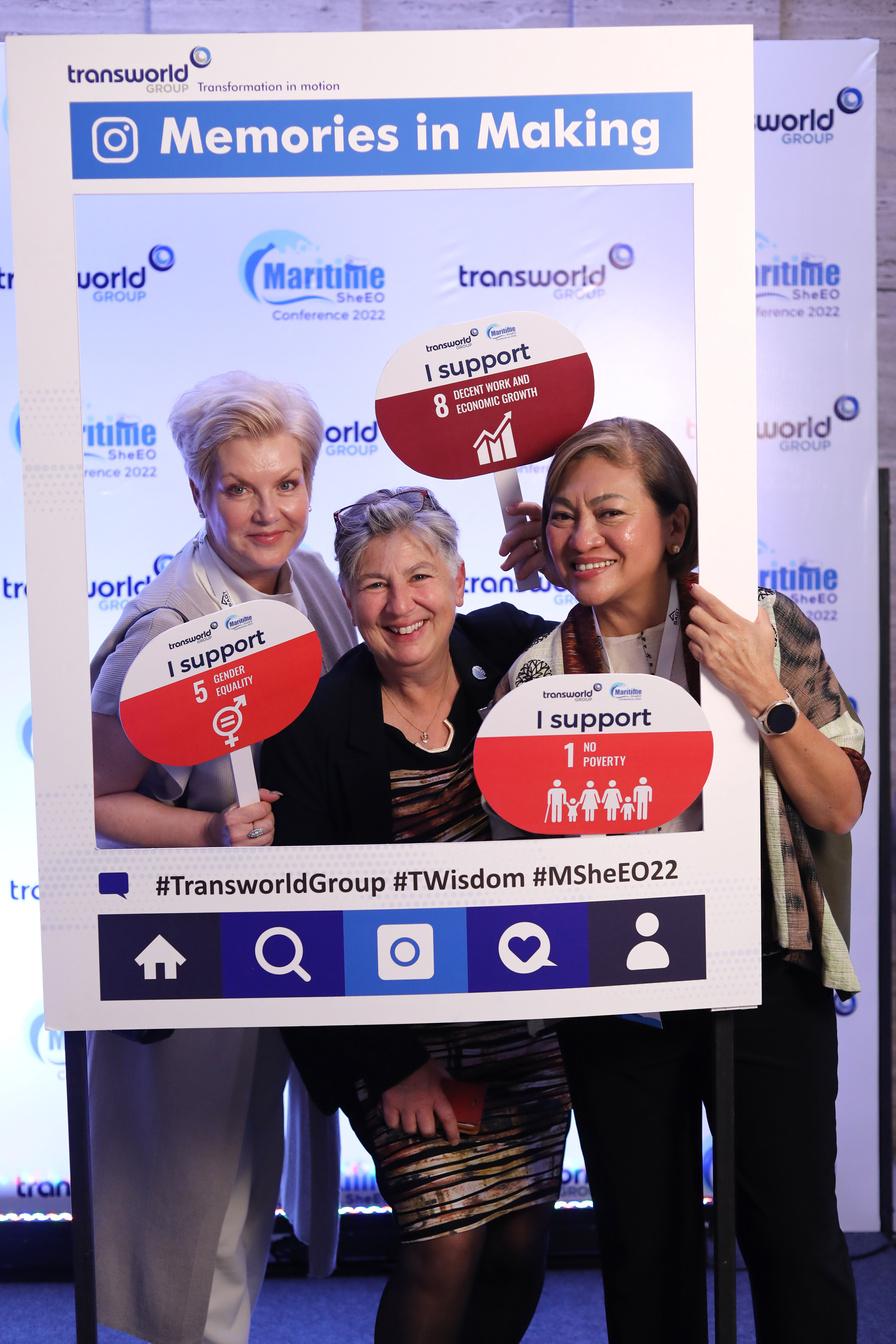
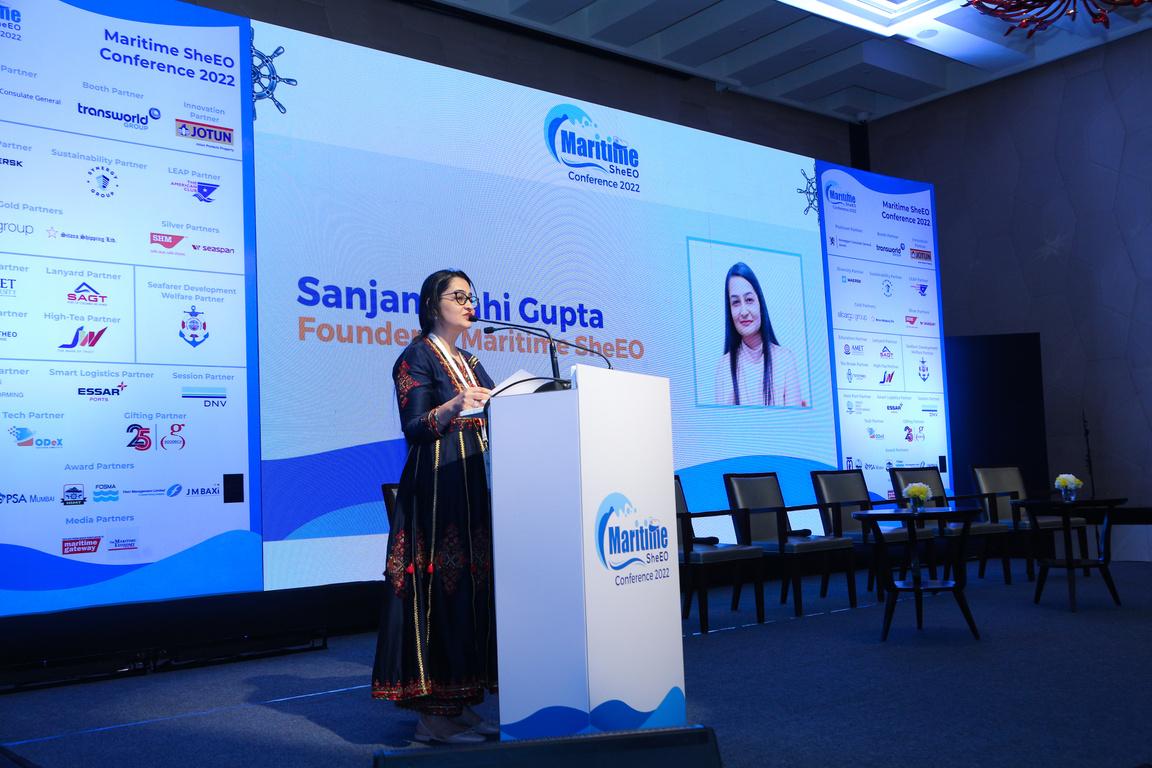
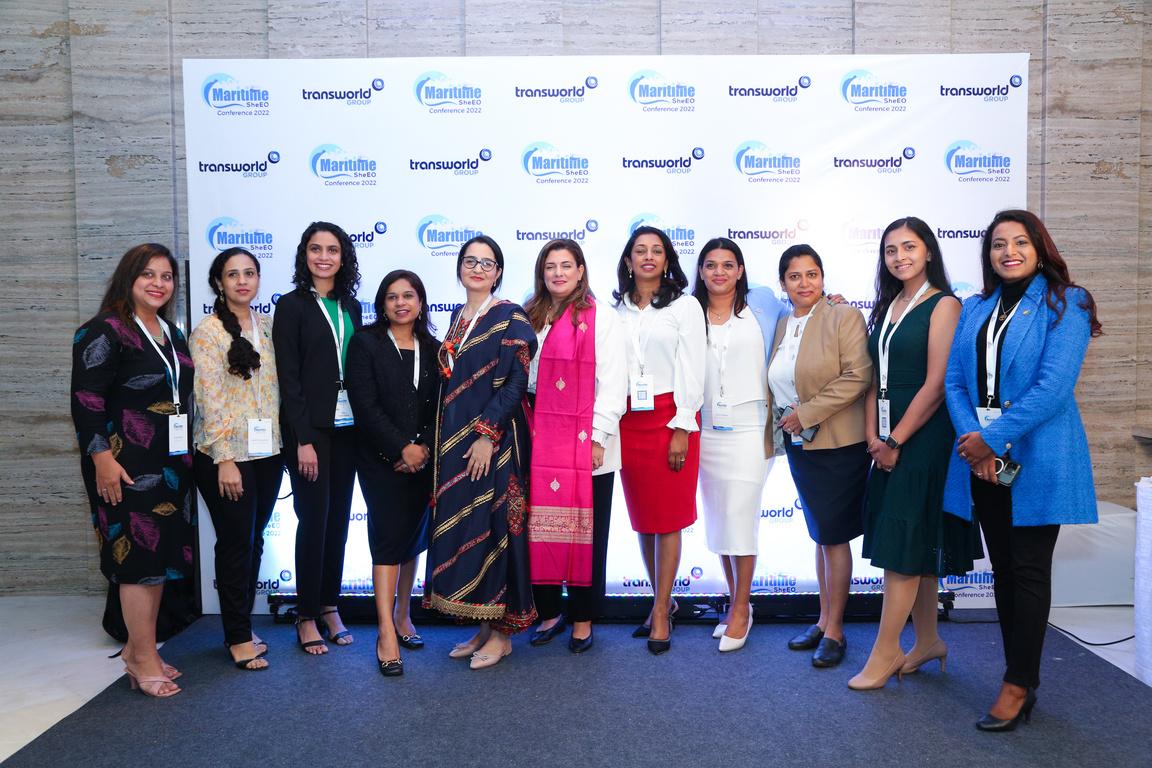
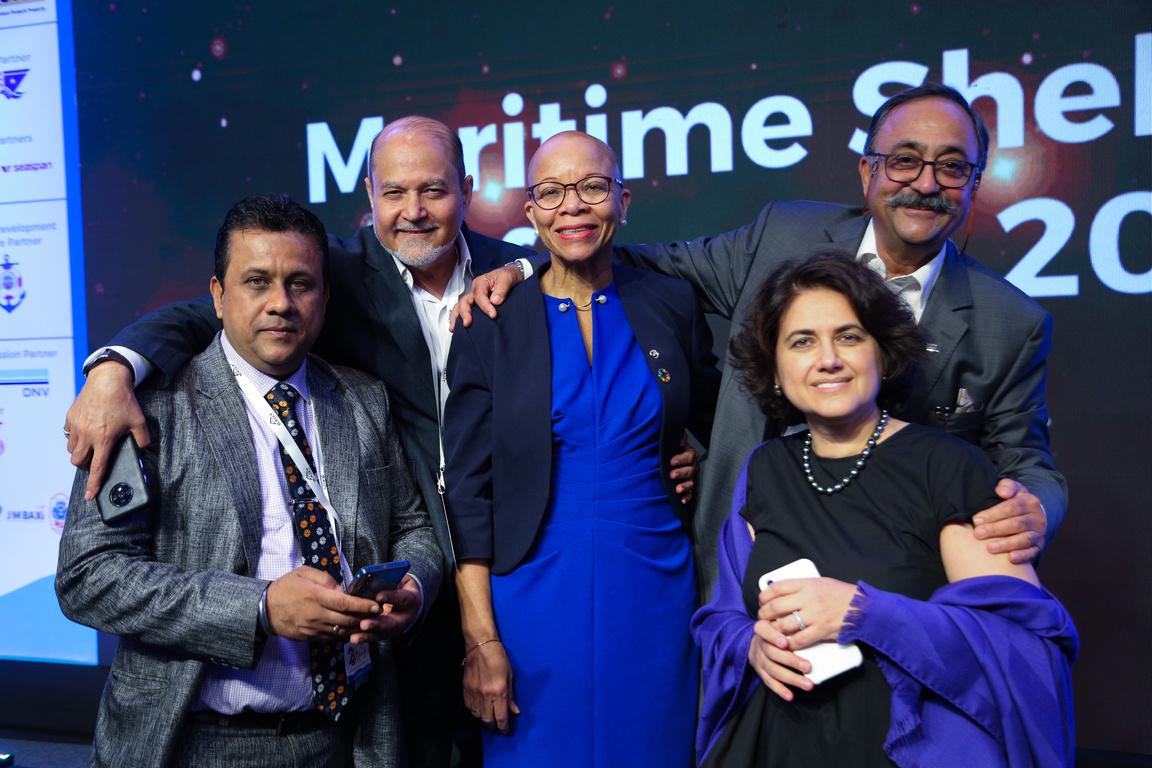
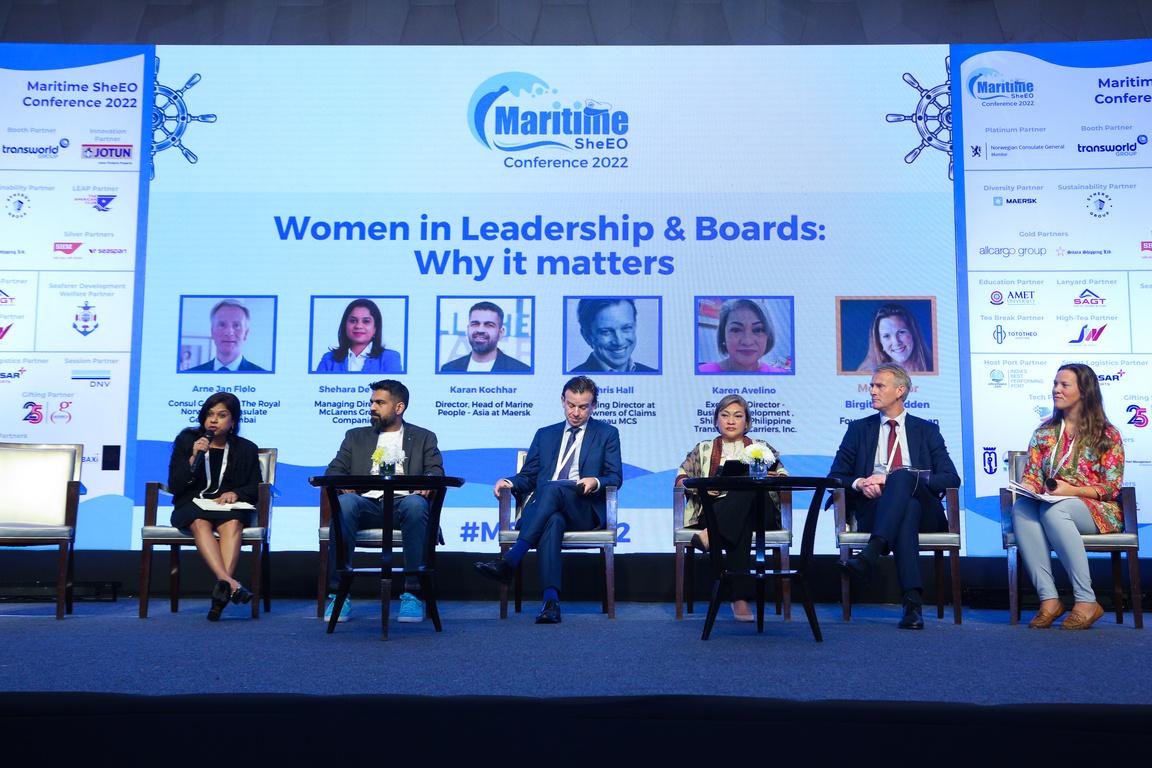
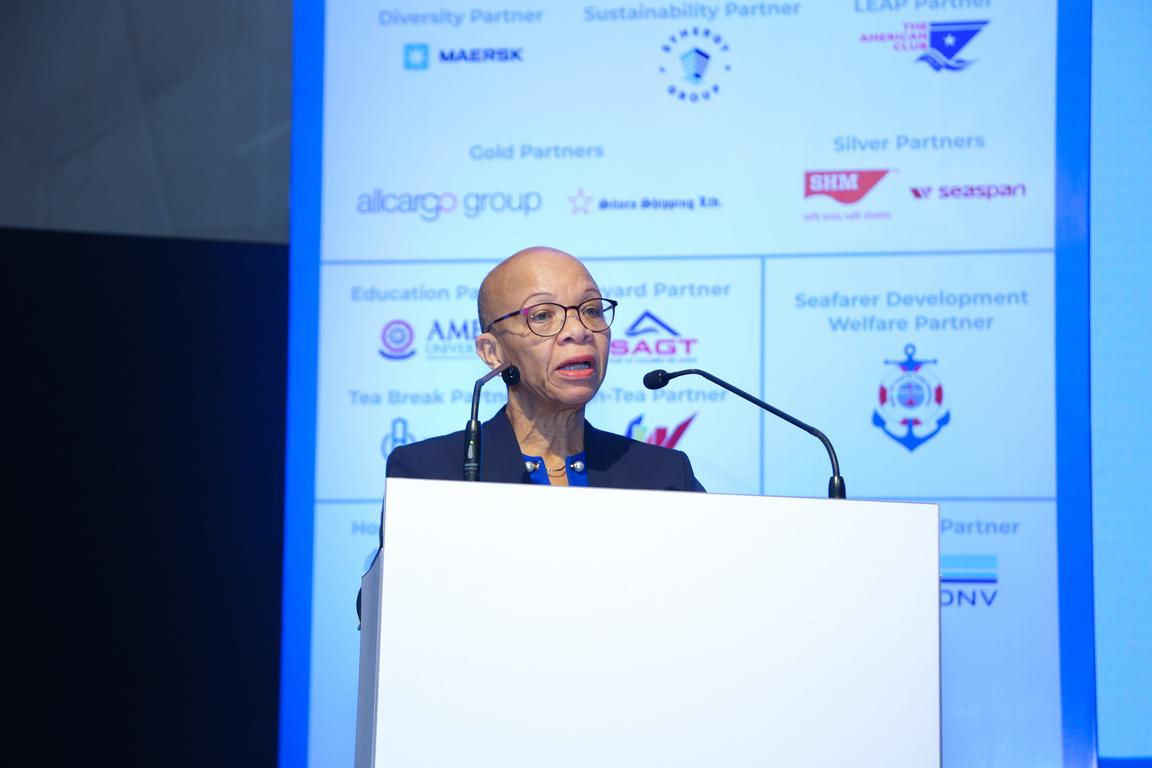
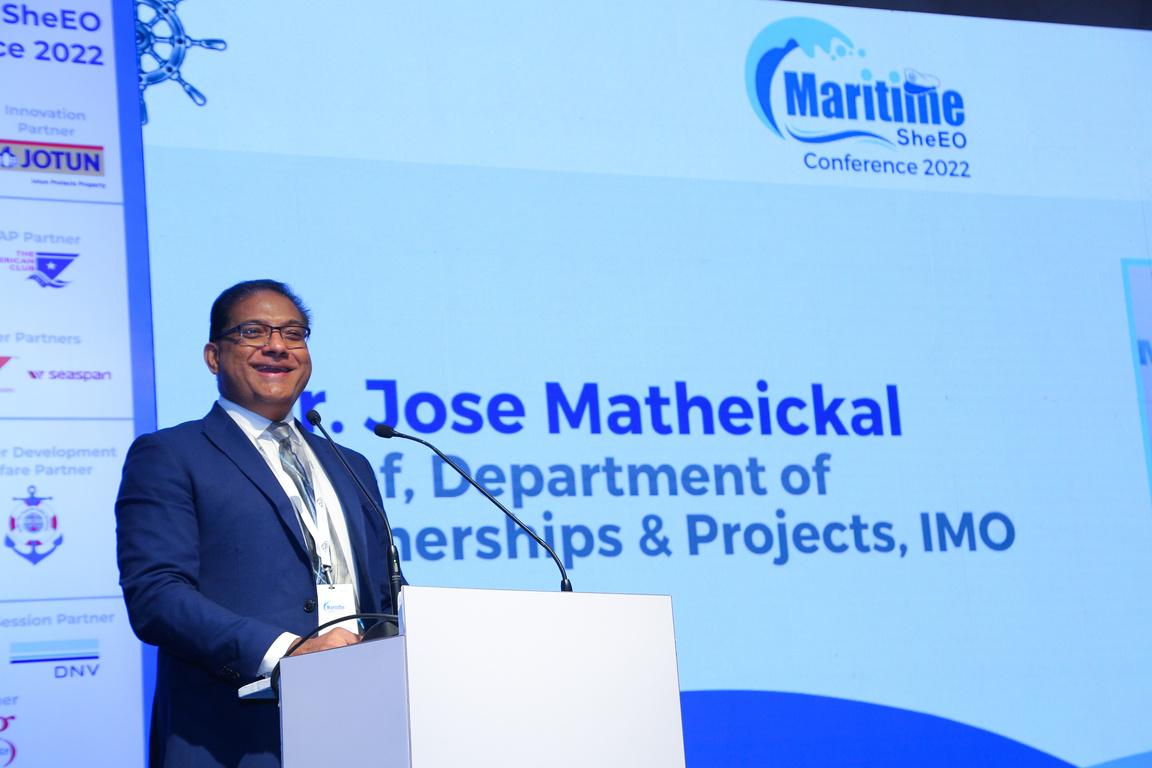

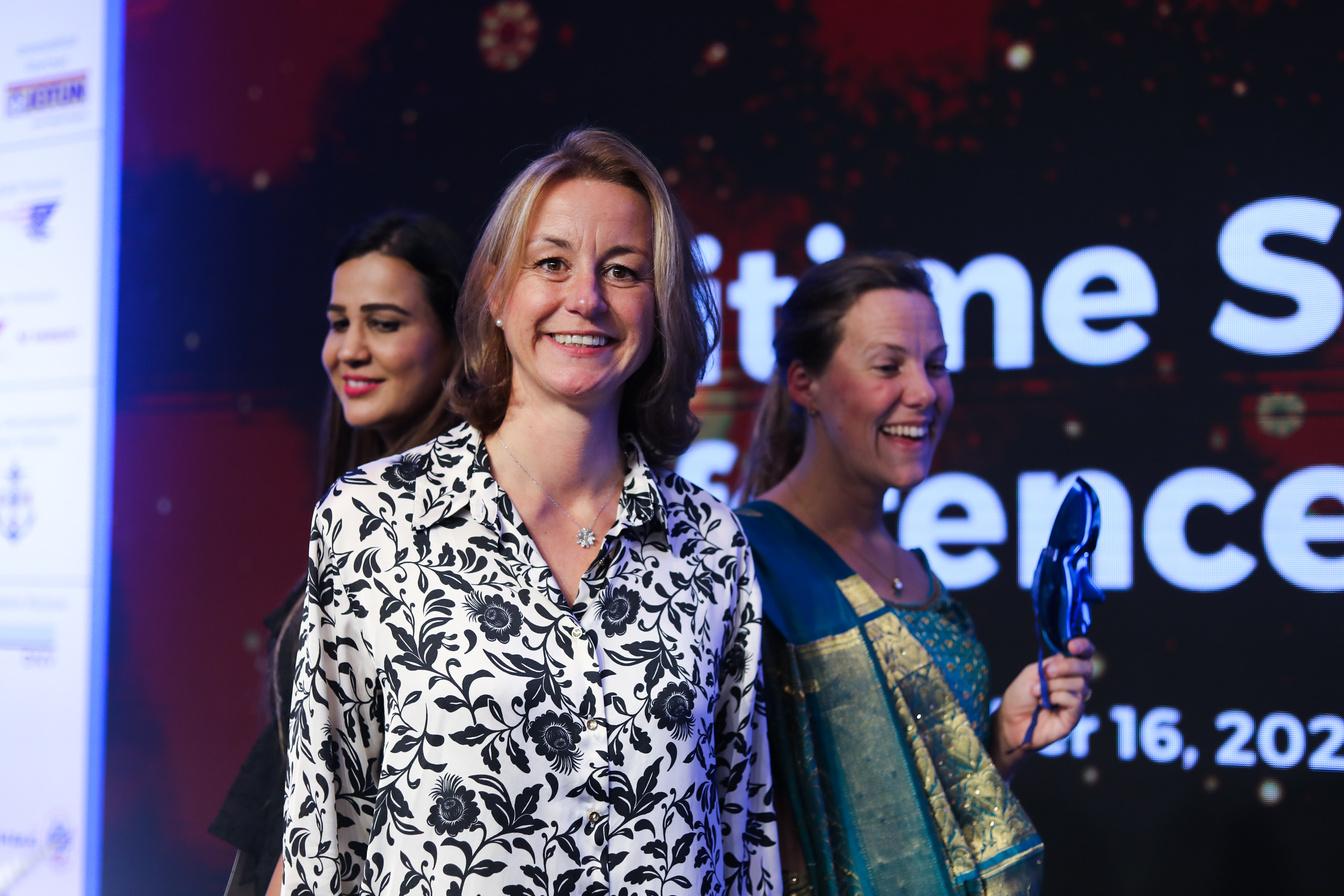
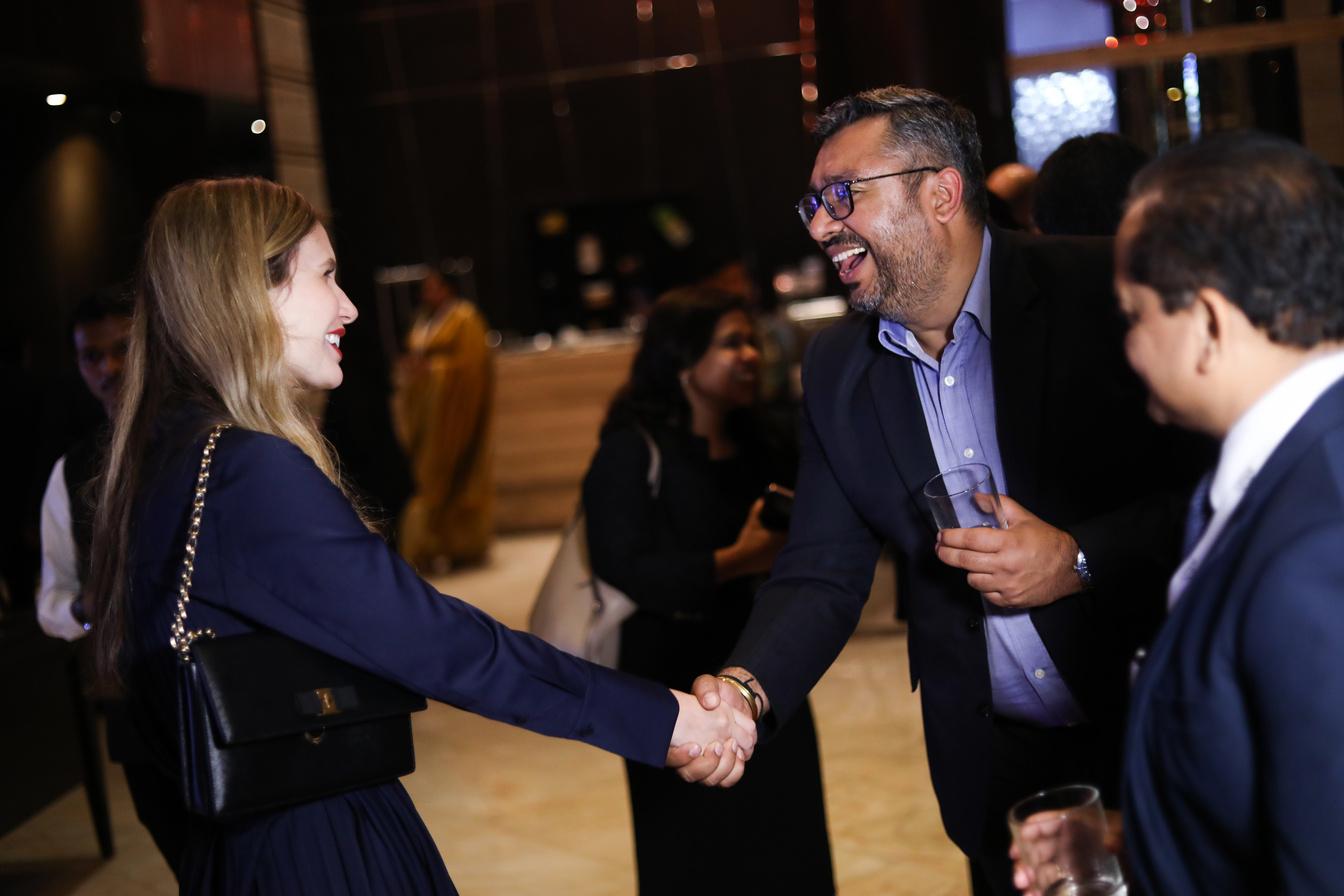

PILOT DIARIES
Women marine pilots have been rare, and relatively invisible even to each other With a vision to connect the women marine pilots from around the globe, back in 2020 I started introducing those I knew.
Once these people started talking it was apparent how valuable this connection was. I would then scour Social Media and other news outlets to identify articles or stories where I might find more women marine pilots and suggest that they join this great, amazing, interesting, and insightful discussion with other women marine pilots from ports all over the world.
Lindile Mdletshe was one of those women I spotted on a Transnet social media post about pilotage in Cape Town, South Africa.
With Lindile joining our conversation and learning more about her own career path to pilotage has been very insightful, while we also learnt more about the South African maritime training pathways at sea and ashore. We were particularly inspired to learn about the high number of women represented in senior port roles such as marine pilots in some ports such
as Cape Town due to the different training pathway opportunities for seafarers While we are yet to meet in person, through our online catch-ups and messages it is clear that Lindile has a strong commitment to personal growth in her professional studies and career. It is a pleasure to be able to introduce and share her story with the She Of Change readers.



Page 20 - Issue 10
JEANINE DRUMMOND MANAGING DIRECTOR AND PRINCIPAL MARINE ADVISOR AT INTEGRAL MARITIME, AUSTRALIA
FROM DREAMS OF THE STARS TO NAVIGATING THE SEAS: MY JOURNEY INTO MARINE PILOTING AT THE PORT OF CAPE TOWN

Life is full of unexpected twists and turns, often leading us down paths we never imagined Such is the remarkable story of my journey into the world of marine piloting in South Africa.
Prior to becoming a marine pilot for TNPA, I embarked on a rigorous training journey that encompassed various roles within the maritime industry. From cadetship to Tugmaster, each step paved the way for me to find my true calling as a marine pilot at the prestigious Port of Cape Town
Allow me to introduce myself: I am Lindile Mdletshe, hailing from the enchanting coastal town of St Faiths, nestled on the mesmerizing shores of Port Shepstone on the South Coast of KwaZulu-Natal, South Africa. While my upbringing was in close proximity to the sea, the idea of pursuing a career at sea never permeated my wildest dreams But life took an unexpected turn, completely changing my path and transforming the direction of my journey forever.
Discovering My Passion for Maritime Studies

My voyage began with a fortuitous encounter during a time of personal challenges. After the tragic loss of my parents during my final matric exams, I found myself reevaluating my plans for university The distance from home became
a significant factor, leading me to explore the present during the day and night as well I maneuvered all types of vessels. İzmit Bay has different types of ports such as Containers, General cargo, Chemical, RORO, and Tanker terminals, as well as shipyards, passageways and anchorages Also, berthing and unberthing activities are carried out here.
Faculty of Science at Durban University of Technology
It was there that I stumbled upon a board showcasing the Maritime Studies department, igniting a curiosity that would shape my future. From interviews to acceptance and the generous support of Transnet bursaries, everything fell into place as I embarked on my maritime journey

Page 21 - Issue 10
Lindile Mdletshe Harbour Pilot in Cape Town, RSA
From Cadetship to Tugmaster: Building a Strong Foundation
The initial phase of my training involved undertaking a cadetship, where I dedicated myself to gaining the necessary sea time and obtaining a Class 3 deck officer certification.
My journey commenced as a cadet at Safmarine. I have vivid memories of my first day onboard the ship, where the ongoing cargo operations resulted in a considerable freeboard, making the gangway incredibly steep.
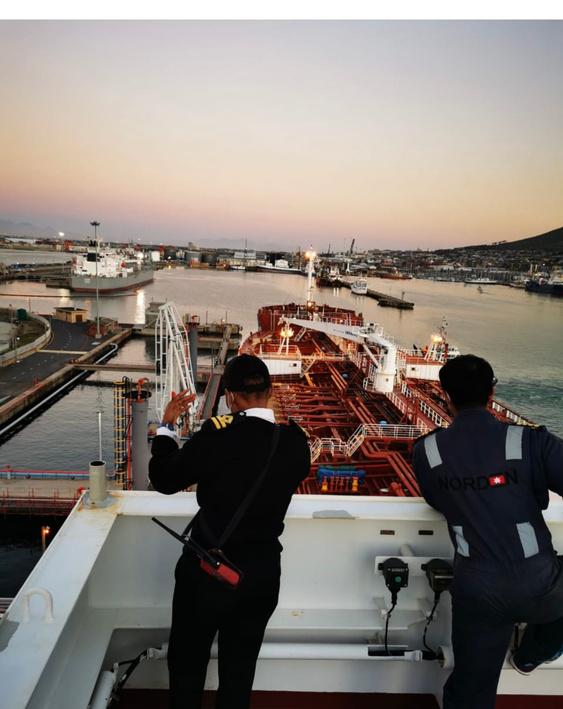
To add to the challenge, I had to haul a heavy load of luggage up the gangway. It was made clear to us that we would be treated as seafarers rather than delicate ladies, and we would need to prove ourselves capable even in physically demanding tasks Fortunately, I encountered some of my former classmates on board who kindly assisted me in carrying my belongings.
The cadetship experience was a mix of highs and lows, as is characteristic of such work. One aspect I particularly relished was being on the bridge, navigating the ship and continuously discovering new things during my watch
Challenges were an inevitable part of the journey, but they provided valuable lessons in overcoming obstacles, both professionally and personally The key takeaway from those experiences was resilience, a quality that has proven essential in my life.
However, my journey didn't end there. I made the decision to pursue additional training as a tugboat master, recognizing the invaluable experience it would bring.
Spending several years on tugs proved instrumental in shaping my career, providing a deep understanding of people management, the port environment, and the broader marine services business.
Navigating the Port Environment and Overcoming Challenges

Transitioning from the role of Tugmaster to a Marine Pilot necessitated additional training and preparation. This involved a comprehensive program that encompassed both theoretical and practical aspects, spanning approximately two years.

After completing my cadetship and qualifying as a Navigational Officer (Deck Officer) at TNPA Durban port, where I was initially hired after university, my training with Safmarine concluded To embark on a new path, I engaged in another two-year training program to become a Tugmaster.
Taking over from the Master who had been mentoring me made my job both easier and more challenging. It was a unique experience to manage individuals who were aware of my weaknesses and had observed my training journey However, I was determined to enhance my leadership skills, including managing people and developing emotional intelligence.
Although becoming a pilot was not something I had initially considered or applied for, I found myself intrigued, perhaps influenced by stereotypes associated with the profession.
Page 22 - Issue 10
Interestingly, I had always attentively followed the pilot's instructions while working on the tug, mentally processing the entire piloting operation. Eventually, I grew weary of my role as a Tugmaster and decided to embrace the challenge of becoming a pilot, not only as a personal trial but also to gain insight before potentially pursuing a managerial position. Little did I know that this decision would uncover my true calling as a pilot This picture below was taken last year 2022, closing the year with a bang of good piloting. I enjoy every minute of it.
environmental conditions. Unrelenting winds persist throughout the year, coupled with formidable swells, particularly during the winter season. These elements present formidable challenges that require unwavering focus, adaptability, and specialized expertise I vividly recall the apprehension I felt on my first assignment as a pilot.
Prior to embarking on that momentous occasion, I reached out to a friend who is a ship's captain for guidance I expressed my concerns about being a petite and young female pilot and sought advice on how to conduct myself. The nerves were palpable as I made my way to the pilot station
To ease my anxiety, my friend suggested that I inform the captain it was my inaugural piloting job and request their collaboration until we safely reached our destination I am grateful to have encountered a welcoming captain who not only accepted my request but also offered to capture a photograph of my inaugural piloting experience.
Challenges and Triumphs


Throughout my journey, I faced numerous challenges that tested my skills, resilience, and determination One of the most significant obstacles was being assigned to a shift comprised solely of men, a shift that many women before me had not endured. However, through unwavering dedication and a spirit that triumphs over adversity, I earned the respect and admiration of my colleagues.
While some may still harbour doubts or resist the inclusion of women in the industry, encountering welcoming captains who recognized my capabilities provided moments of triumph that made it all worthwhile.
The Port of Cape Town: Battling Environmental Forces
As I navigate the Port of Cape Town, my current workplace, I am confronted by its notorious reputation for treacherous
Every time I experience doubt or weariness, I thank the Lord for His guidance and for the successful completion of each job.
(James 1:17 - Every good and perfect gift is from above, coming down from the Father of the heavenly lights, who does not change like shifting shadows)
My journey into marine piloting at the Port of Cape Town has been nothing short of transformative From dreaming of the stars to finding my true calling among the waves, I have discovered a sense of purpose that transcends any initial aspirations.
As I navigate through the challenging winds and swells of the Port of Cape Town, I am reminded of the inherent risks and the necessity for continuous advancement. It is an honour to be part of a team that fearlessly confronts these challenges I remain committed to leveraging my expertise to make a positive impact within the maritime industry.

Page 23 - Issue 10
Captain Kate McCue - Creating History At Celebrity Cruises

Capt Kate McCue, the first American woman to be appointed as a Captain at Celebrity Cruises, is a role model for all women striving for success in their maritime career. Let’s read about her remarkable seafaring journey and perspectives in this interview.. Let’s read about her remarkable seafaring journey and perspectives in this interview.
What inspired you to follow a career at sea? When I was 12 years old, my parents took me and my brother on a 4 day cruise to the Bahamas. When we got off the ship, I told my dad that I wanted to be the Cruise Director and plan all the fun events onboard the ship. My dad said, "You can do anything you want, including drive the thing". That is where the seed was planted and after 19 years at sea, and a steady progression through the ranks, I was promoted to Captain in 2015.
What are the essential skills needed to be a successful captain, and how do you cultivate them?
The formula for success in the cruise industry is the same as any industry. Surround yourself with diversity, and be your authentic self, approachable and vulnerable Be kind, be supportive, and pay it forward. You cultivate these skills by understanding who you are as a person, being aware of your strengths and weaknesses, accepting feedback, and at the end of the day, knowing what you want


Page 24 - Issue 10
What advice would you give to young women who aspire to follow in your footsteps and become captains or leaders in their own right?
I would encourage anyone who wanted to pursue a life at sea to jump in wholeheartedly, but I prefer that rather than following in my footsteps, they forge their own path by bringing their unique personalities and perspectives to each job they do
As a captain, you must have seen some incredible sights at sea. What's the most breathtaking view you've ever seen? During the lockdown, we spent 16 months at anchor in the Bahamas. Nature never ceased to impress, whether it was the sunrises, rainbows, lightning storms, or marine life that came out to the ship, like owls, osprey, or sharks But truth be told, I lived for the sunsets that filled the sky each evening with every colour of the rainbow you can imagine.
We have another one for you. What are some of the funniest moments you've experienced while on board a cruise ship?
We once found a set of someone’s teeth on the bridge We didn’t know who they belonged to or how they got there.
Oh wow! Sounds crazy!
What is the most adventurous thing you've done while on a cruise ship?
The most adventurous thing I’ve done while working on a cruise ship would be either kissing the bow in a mermaid tail, sitting on the azipods during a periodic underwater hull inspection for security and maintenance purposes (not to worry, as everything was locked out and tagged out), or jumping out of an airplane while docked in Key West.
If you could invite any celebrity or historical figure to join you on a cruise, who would it be and why?
If I could choose a celebrity or historical figure to join me on a cruise ship, it would be Michelle Obama. She is an incredibly inspiring and accomplished woman with a wealth of life experiences and knowledge. I think spending time with her would be both educational and uplifting
As the former First Lady of the United States, I would love to hear more about her experiences as a public figure and learn from her insights about leadership, activism, and making positive changes in the world.
Additionally, I think Michelle Obama would be a fantastic travel companion, as she has traveled extensively and seems to have a great sense of humor and a down-to-earth personality.
How important are communities for women in seafaring roles?
Becoming the first American woman to captain a cruise ship was a goal I set for myself as I was rising through the ranks. There is an
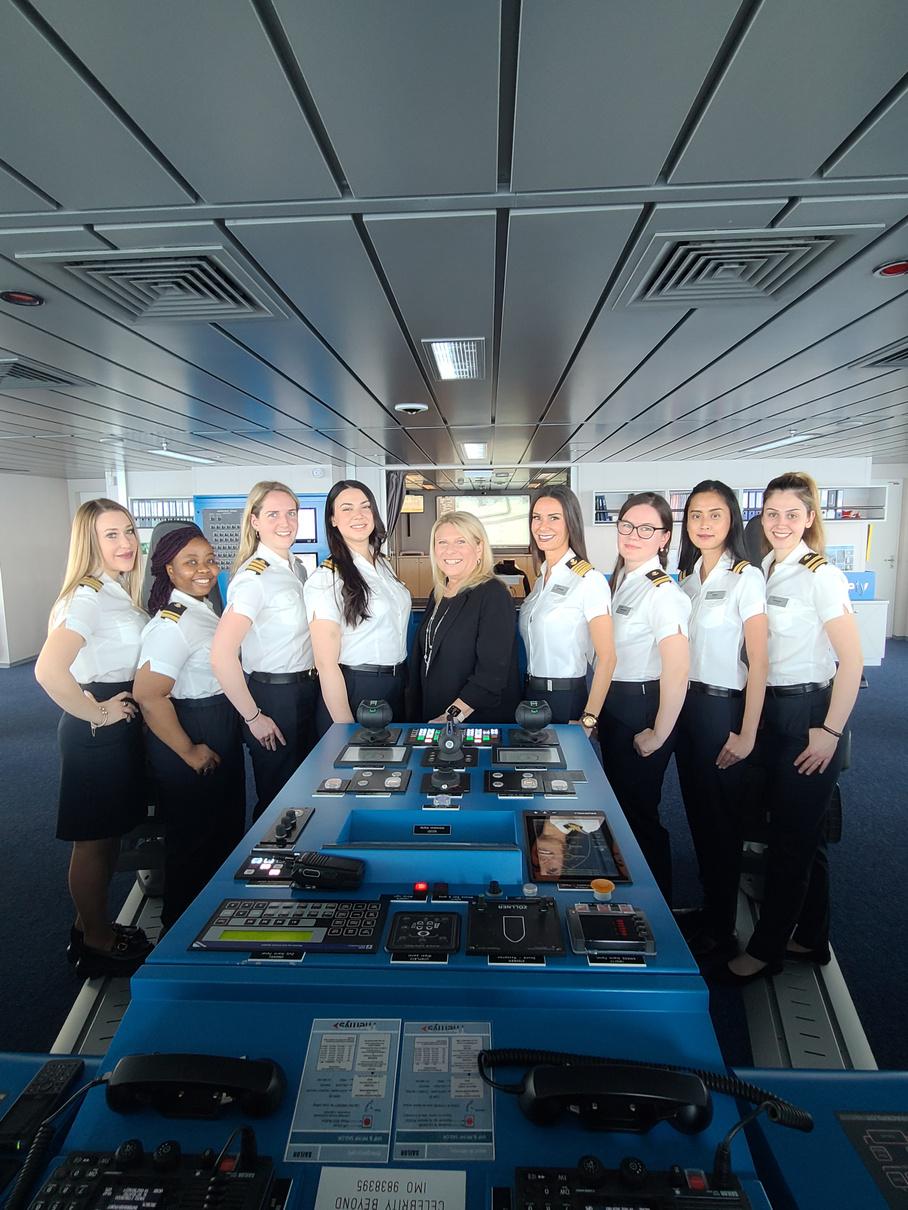


Page 25 - Issue 10
advantage to being the "first" For me, it meant that I could write my own rule book and define my position the way that I wanted to, by being authentic and bringing a sense of self to the Captain's role But at the end of the day, I understand that I didn’t get here alone. Having a support system made up of friends, family, and colleagues is paramount regardless of gender.
social media while showing how incredible a life at sea can be! Social media also has become a mentoring tool and a way to connect with others, which has assisted in recruiting and expanding our dedication to diversity and inclusion.
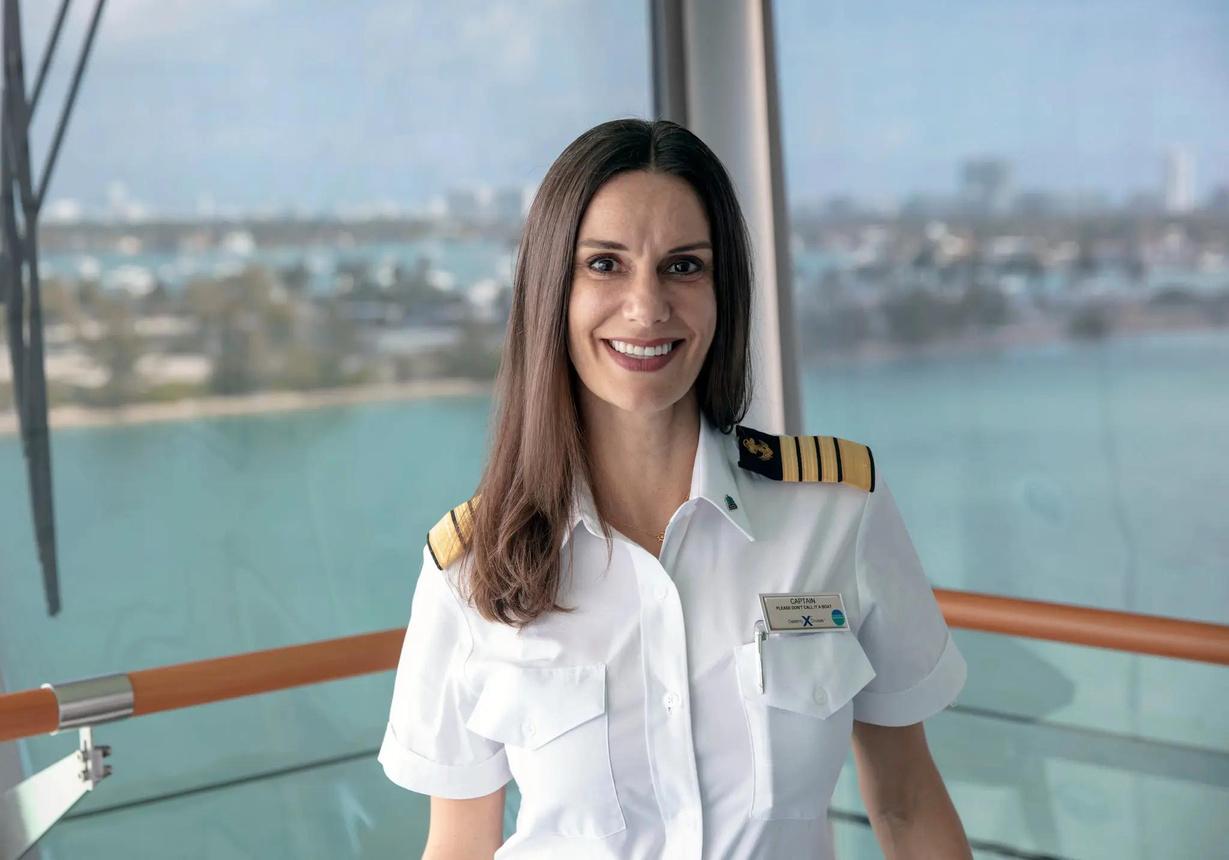
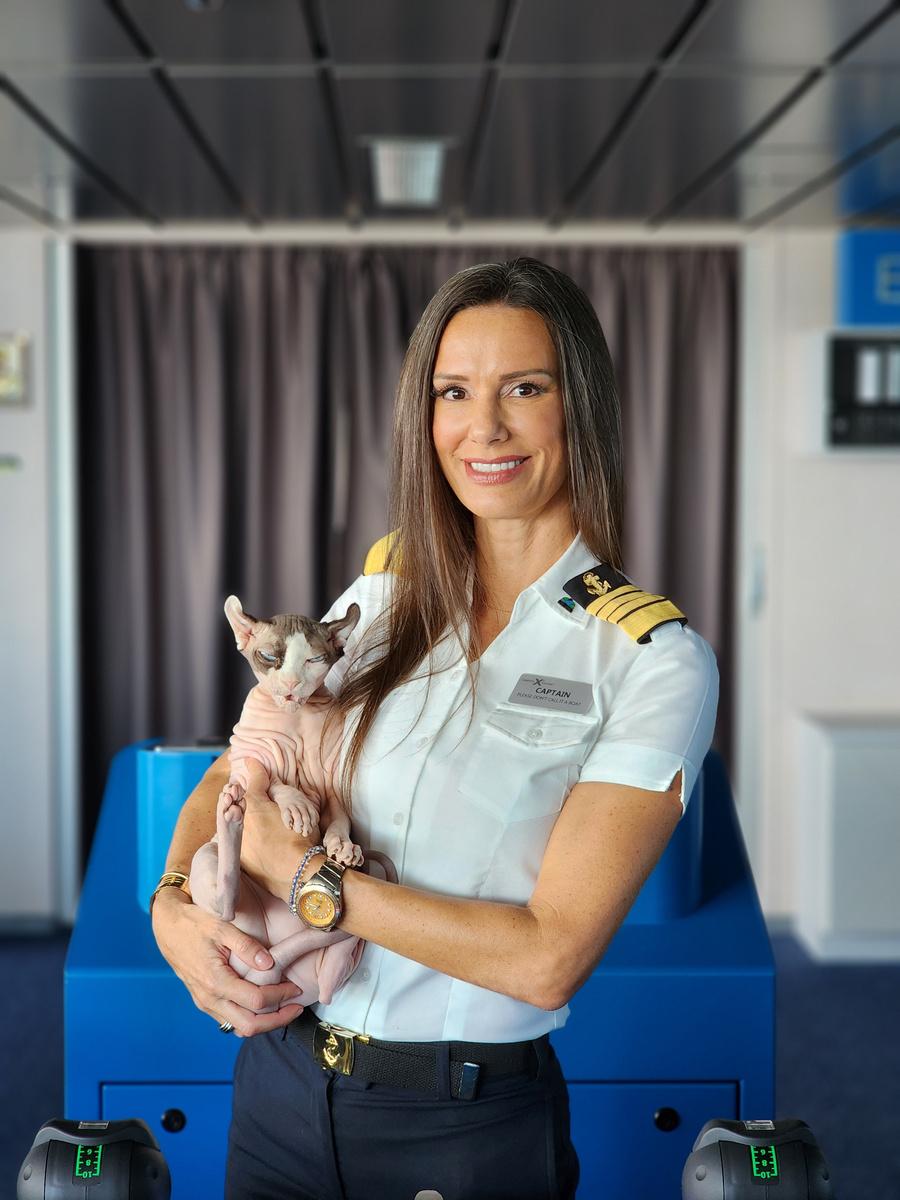
So no shout out from Bug? Ok ��
Tell us more about Tangerine Table Talk! The Tangerine Table Talk was a way to showcase our incredible crew, their unique stories, and the incredible journeys that got them to where they are today.
What is the key to building a strong social media presence? Can Bug Naked give us a shout-out on Instagram?
When I was growing up, the only thing I knew of cruise ships or a life at sea was from what I saw on the TV show, “The Love Boat”. And as much as I adore “The Love Boat”, it isn’t an accurate account of what my day-to-day or even my life at sea looks like. Social media provides a platform to really show my career in an intimate way while accessible to the masses.
As one of the most followed mariners (not "female" mariners) in the world on social media, I am an avid believer that "if you can see it, you can be it" and being your true self creates a connection with others through

Thank you for joining us, Captain Kate!

Page 26 - Issue 10
Captain Kate sails with her hairless cat, Bug Naked, who also has a strong media presence with almost 100k followers on Instagram & Tiktok.
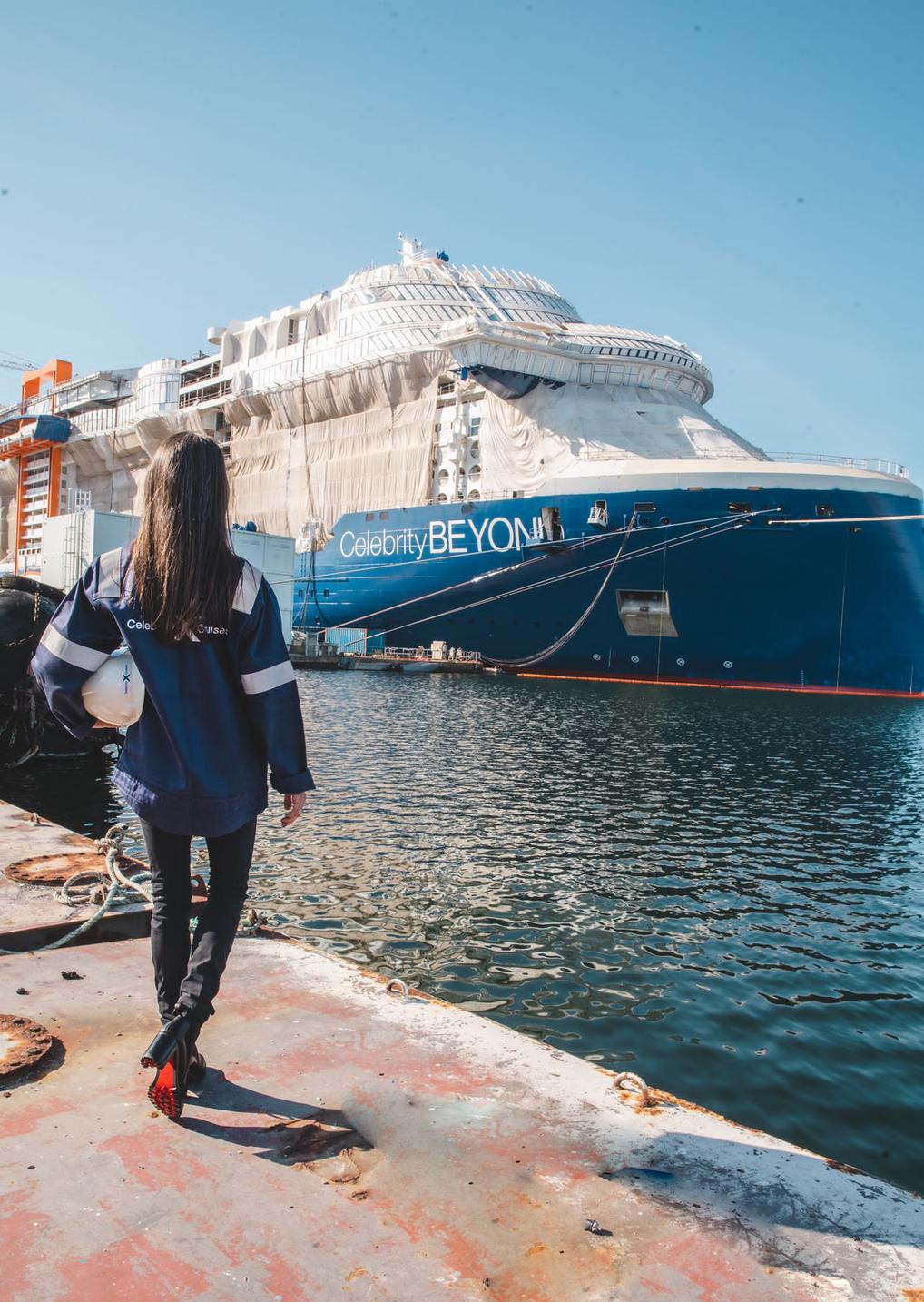
TÊTE-À-TÊTE WITH LETICIA
How did you get to be part of the maritime industry?
I was born in a beautiful town on the north coast of Colombia called Santiago de Tolú. A short distance from my house, I could feel the hustle and bustle of the arrival of ships at the port.
My father was the maritime agent who received the ships arriving at the port, but that was not the beginning of my story. When I was a teen, my father decided to send me to study in Bogota, the capital of Colombia, which was 2600 meters above sea level and surrounded by the Colombian Andes to train me He said it would be good for me.
Although I graduated as a lawyer with some experience in the public sector, it seems my life was destined to the sea and ships I arrived at a unit of the General Maritime Directorate. This is the national entity that executes the maritime policy issued by the Colombian government, the Port Captaincy of Coveñas to create the legal department.
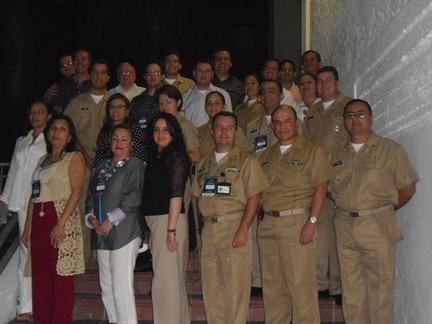

I was appointed at the port Captaincy of Coveñas to create the legal department. This was a great challenge for me, but the experience I brought from the police inspection helped me a lot. I had never worked under the command of a military man, but I had a strict father and the terms and situations were becoming familiar to me
What was it like, being a woman surrounded by men in leadership ? Did you find having no seagoing experience a drawback?

Being a woman, and being surrounded by men in command, was an incredible adventure I had to strengthen my character, meticulously study the rules, and apply them in practice. To be able to issue concepts that were full of assertiveness and eloquence, it was so without having commanded a ship, I had to learn to simulate situations, understand circumstances, give credit or not in my investigations when I listened to crew members in discharges.
So much so that I was embarked and transferred to several Port Captaincies, to

Page 28 - Issue 10
Leticia Diaz Maritime Lawyer, & Pioneer in Colombian Maritime Direction in Colombia.
which I arrived (with my son who is the angel of my life and for whom I had to fight after an emotional breakup), to units such as Cartagena, Buenaventura and Barranquilla that further strengthened my maritime knowledge, until I completed the mandatory service time to obtain my pension.

How can women navigate workplace discrimination and harassment, and what resources are available to support them? Harassment, for example, is sometimes socially accepted in informal environments There are communication styles and behaviours that are invasive for women.
In your opinion, how do womens' experiences at work differ across different industries and professions, and what factors contribute to these differences?
There is occupational segregation according to gender In the case of women, they tend to accept lower wages, and work schedules with few opportunities to learn due to their double role - executive and mother.
The factors that contribute to the differences are directly related to the beliefs that both men and women have in relation to their own abilities, knowledge and roles within an industry or company.

We see this reflected in the different academic cloisters when we see that certain professions are demanded by gender, as an example we can cite nursing faculties, in which women predominate
Another aspect that influences is the traditional system of upbringing and gender identification with the professions
In the case of the Military Forces, this discipline was initially reserved for men, but with the passage of time calls are opened for women who have demonstrated capabilities, strength, and leadership in command management, sometimes much better than a man.
Other factors that lower women's opportunities in general are poverty, early marriage, not much access to sexual and reproductive health, violence and mutilation among others.
So instead of procuring resources to support women who were personally harassed, there are more social resources that vindicate the harasser, camouflaging themselves as within diplomacy or just a joke.
In my opinion, it is the woman's choice for herself to be respected and develop her character in front of the bullying situations in which she may be involved. Within the resources available, it could indicate, among others, the recognition of work progress in an impartial manner, highlight the importance of the gender subject through talks with colleagues and formulate the respective complaint before the competent entities without any fear
Leticia is an advisor to companies and users in maritime She is also a teacher of the Corporacion Universitaria Reformada (CUR), in Barranquilla-Colombia within the Maritime Administration program, where she teaches Navigation Legislation and Maritime Transport Law at the Naval School of Warrant Officers of the Colombian Navy in the training of Naval Warrant Officers of the Shipping, Traffic Control, Logistics and advanced courses of Law.
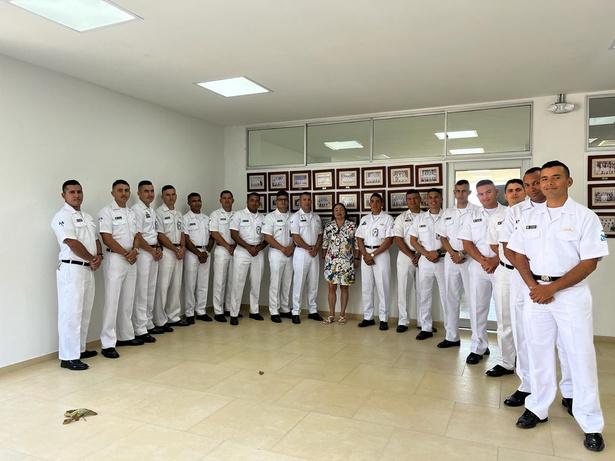
Page 29 - Issue 10
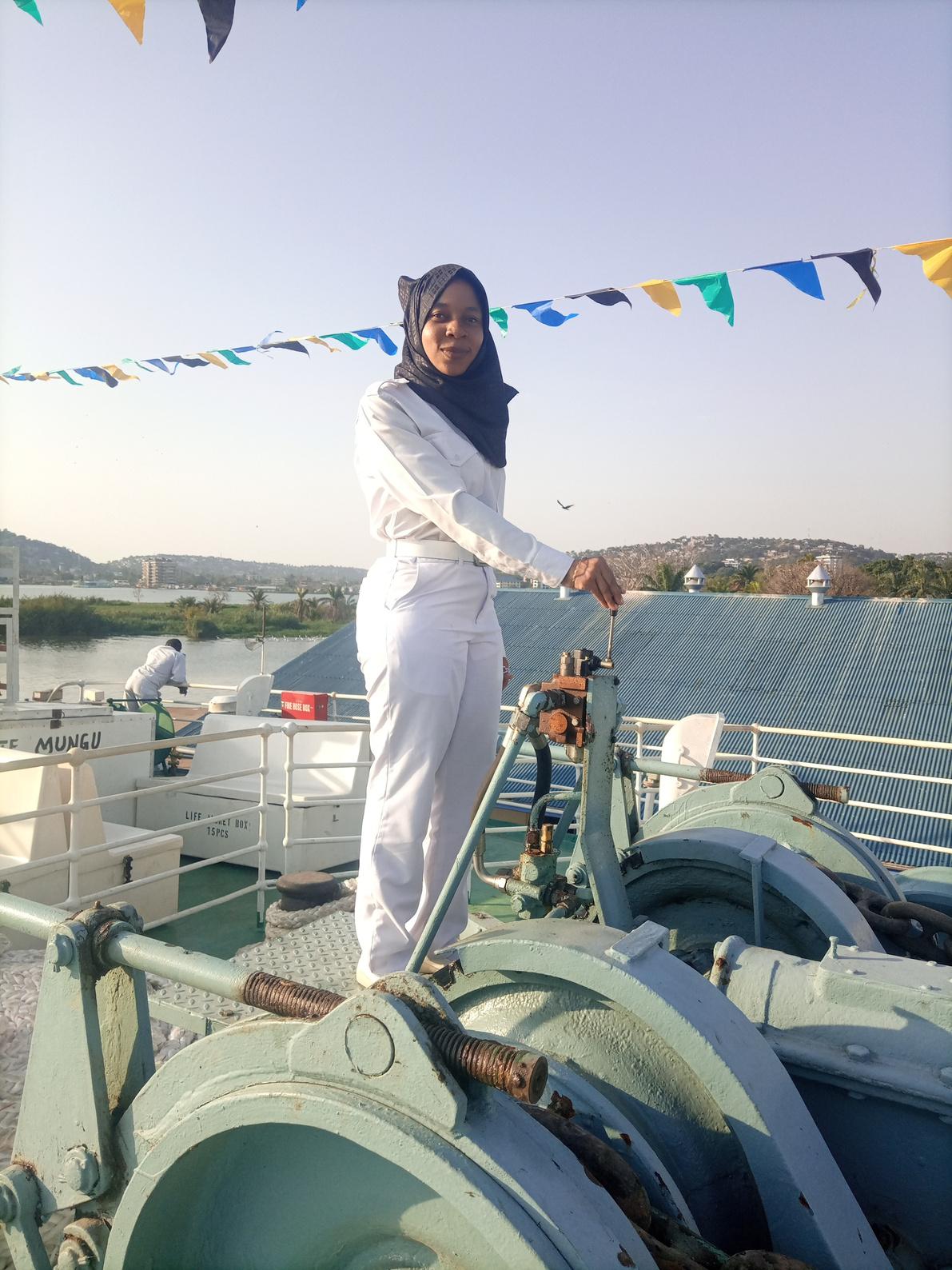 AB Zamra Issa Ramadhan
AB Zamra Issa Ramadhan
THE ON-SCENE-COMMANDER DURING THE NATIONAL OIL SPILL EXERCISE
Growing up in the highlands of Kenya, I never imagined that my career path would lead me to the open seas, harbour and onboard a vessel.
While I thought I had seen large volumes of water during rainy seasons, my work in Marine Environmental Conservation has opened my eyes to the vastness and complexity of the maritime industry and the necessity for a National Oil Spill Response Exercise Program
A National Oil Spill Response Exercise is a simulated event that tests the National Oil Spill Contingency Plan. It involves early planning by the key stakeholder’s committee and is one of the preparedness requirements.


The objective of the exercise is to enhance coordination and communication between stakeholders, identify areas for improvement, and test the effectiveness of response strategies.
Participants in the exercise include government agencies, oil companies, environmental organizations, and other stakeholders with a role to play in the oil spill response. As more women break barriers and take on leadership roles, the industry is becoming more diverse and inclusive
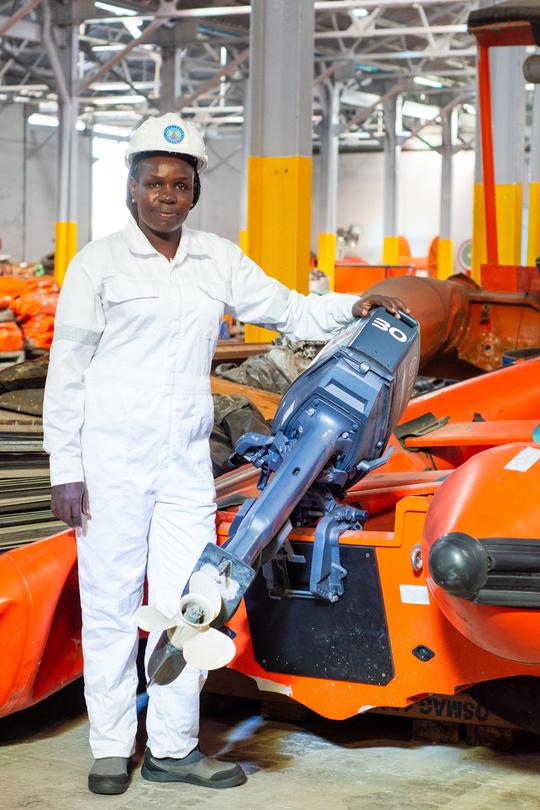
I have had the privilege to be the On-SceneCommander during our National Oil Spill Exercise I was in charge of all the operations during the drills and exercises
We plan our exercises annually together with training where we have sensitization of the contingency plan, equipment demonstration, and oil spill equipment deployment.
During the exercise, I was in charge of seven vessels, and over fifty responders, grouped into four groups/teams i.e. Containment, Recover, Chemical Dispersant Application and Shore clean up Good communication and coordination are key during the exercise Operations.
Together with the team leaders, we strategically created the scenario, briefed the entire team, conducted the exercise, and very importantly debriefed afterwards to pick the learning lessons.
As a woman commander, I received a lot of support from the team. I’ve come to believe that women can also excel in various technical and operational roles and other critical functions within the industry
National Oil Spill Response Exercises are an important tool for ensuring that stakeholders are prepared to respond to oil spills and protect the environment
Page 31 - Issue 10 P
MARITIME SECURITY IN AFRICA
Sophie De Sylvie Djoufa
The ocean is important for maritime transport, socio-economic development, food stability and even a country’s political stability. More than 80% of global trade is carried out by sea.
Maritime transport is affordable and enables the transportation of enormous amounts of products. The sea facilitates the supply of fisheries, energy, biochemical resources, submarine cables, exchange of made and unmanufactured products, food and agricultural products, and natural resources.
The maritime sector is essential, and vital for the African economy, as it is to the rest of the globe African maritime security is very critical, and ensuring it entails several issues that African states must face and overcome
Some criminals enjoy visiting the sea as it is a valuable entry point for pirates, armed robbers, illegal oil activities, all forms of trafficking, terrorists, weapons, drugs, smuggling of various goods and services, illegal-undeclaredunregulated fishing, kidnapping of crews on board ships for ransom, migrants willing to engage in any activity for survival
We must not lose sight of the variables that feed and sustain maritime insecurity networks, which are corruption and a lack or inadequacy of training for all actors involved in the chain.
Although maritime security architecture in Africa has evolved significantly, African States are still struggling to restore their security image and are far from being out of the woods African seas are still chosen for the navigation of convenience flags and ships
Africa is a top destination for decommissioned ships or end-of-life vessels. They have been reborn under the flag of an African state. THIS MUST CHANGE.
This change requires :
Effective implementation and enforcement of relevant international, continental and national instruments
Adopting a genuine or real political will for good maritime governance
Eradicating or removal of corruption
Consolidation of achievements through the ongoing training of all actors in the chain


The establishment of mechanisms to evaluate the level of implementation of these relevant instruments such as the IMO Member State Audit Scheme at the international level, the African Peer Review Mechanism at the continental level, Inter-ministerial Committee for the Restructuring of the Maritime Transport Sector in Cameroon, to monitor and selfflagellate, gives hope for a better future for African maritime safety
Despite some shortcomings, African countries are putting an emphasis on maritime security. The adoption of strategies, declarations, conventions, and the regular holding of African Union Summits and Conferences of Heads of State and Government attests to African States’ interest in seeing the lines move
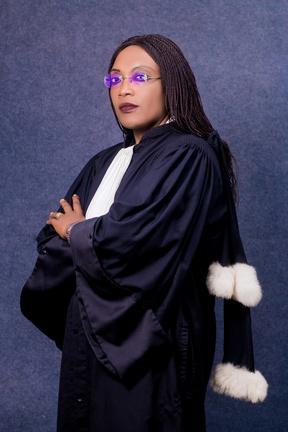
Page 32 - Issue 10
DIGITAL TWIN TECHNOLOGY OF THE LOGISTIC SECTOR
Global industries have achieved a massive technological transformation due to the link between the digital and physical worlds Dual digital technology has played an important role in promoting this convergence.
In almost every industry, systems and products can be linked in a network, which leads to changes in the operation of the logistic sector as well as in the dry ports, by connecting the real and virtual space in the customs warehouse
Accordingly, it leads to higher and more consistent workflows, qualities, and changes in the way of operation. The concept of Digital Twins (DT) has steadily gained interest in research as well as industrial context, an everincreasing number of organizations and companies recognize the value of a (DT) and are investing a large number of resources in researching its potential uses Therefore, it is listed as a key strategic technology trend.
A digital twin is a virtual representation of a physical object or system across its entire lifecycle It uses digital tools and real-time data to virtually create, test, build and monitor a product or process – closing the feedback loop between design and operations. It’s an ingenious approach that facilitates transformation without risking operations
Projecting the conception of “Twin Digital Supply Chain," where Gartner first coined this term in 2018 Since then, there has been a lot of confusion in the market about what it means
and how it can help you make better strategic decisions, how you can start building this capacity, and the technology used in digital twinning will clarify
The technology used in (DT) machine learning is one of the fastest developing scientific fields today, they are composed of both computer science and statistics where artificial intelligence (AI), Wired connectivity, and learning are a subset of artificial intelligence, Speech, computer vision, language processing, robot control and (APIs) Open standards and closed, proprietary-by-design simulation tools and platforms.
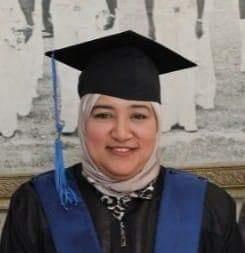

Now the availability of open standards and public application programming interfaces (APIs) has dramatically streamlined sharing and data exchange, making it possible for users to combine data from multiple systems and tools quickly and reliably. Cloud computing developing, maintaining, and using digital twins is a compute- and storage-

Page 33 - Issue 10
Shimaa Abd El Rasoul Seafarers Documents Manager at Landmark Marine (Alex Branch)
intensive endeavour Also, developing (SAAS) is enabling extensive use of the cloud across various industries to provide knowledge through which digital twins can analyze and assess the actual situation of physical Twins.
This technology creates high-precision animated representations to examine the efficiency of a logistics or production process and assess its viability, for example, if applied to customs warehouses in dry ports.
It will be done by means of cyber-physical systems: mechanisms that connect the physical objects with the virtual software to control and gather all the available information about loading and unloading operations.
Digital twins offer two significant advantages: on the one hand, they create hypotheses and scenarios to anticipate any kind of errors and situations; on the other, they contribute towards optimizing the performance of several
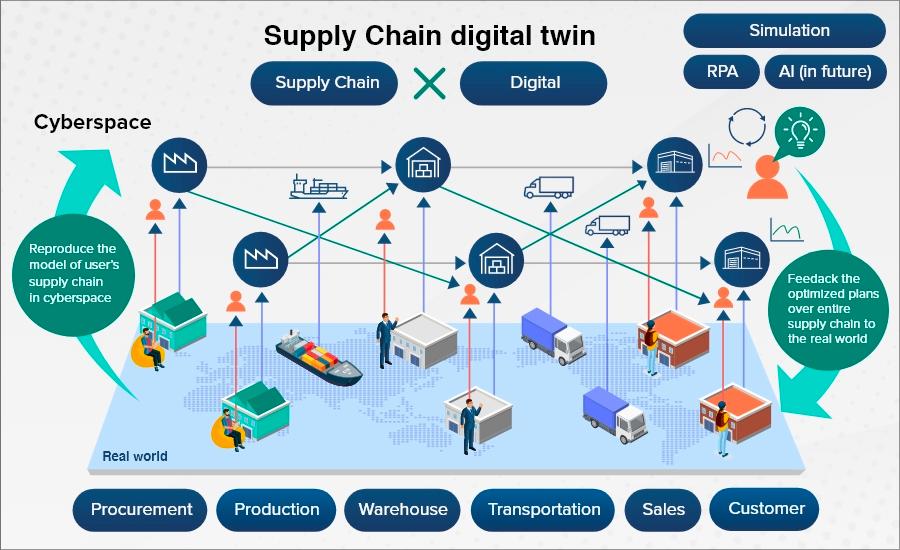

types of processes and operations.
The application of this technology makes it possible to optimize custom warehouse processes, reduce operating costs, bring errors down to a minimum, and foster efficient logistics planning
Digital twins serve to check the stability of the customs warehouse structure and study its behaviour during seismic or other extreme weather events Assess the efficiency of logistics processes and the introduction of logistics planning changes designed to boost the facility’s productivity.It also facilitates a more agile and effective installment of the customs warehouse management system

Page 34 - Issue 10
Source: Hitachi Social Innovation
This software was applied in the project of one of the largest rack-supported buildings in Europe, which was built for Congelados Navarra in Fustiñana, Spain by Mecalux The digital representation generated served to control and validate the proper operation of the warehouse before installing the equipment Synced with Easy WMS, this program receives information in real-time on the performance of the machines to avoid mismatches and breakdowns in warehouse planning.

So the digital twin is constantly learning new skills and capabilities, which means it can continue to generate the insights needed to make products better and processes more efficient
The Mecalux Group uses Automatic Warehouse Studio software for its automated projects. This program provides a 3D reproduction of the warehouse
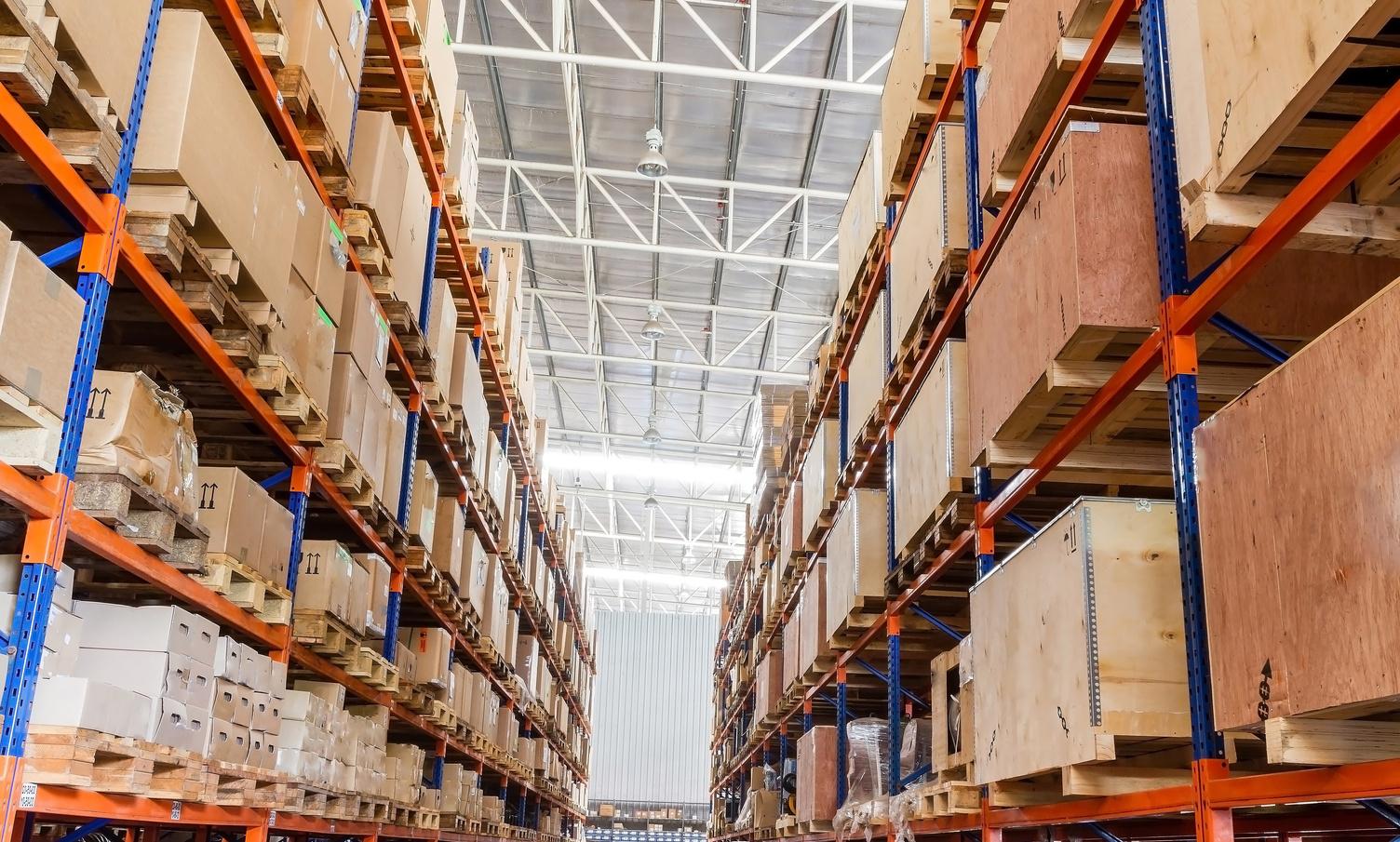

The AWS simulator checks and validates the operation of the automatic equipment before installing the control program in the physical warehouse AWS shortens the time it takes to implement an automated storage and retrieval system (AS/RS) and ensures that the solution proposed by our company completely adapts to the customers’ logistics planning
Digital Twin technology is expected to pick up momentum within the next few years as it becomes more widespread. According to a Deloitte study, the global market for digital twins is expected to grow with a 38% CAGR to reach $16 billion by 2023, and the proliferation of IOT technology is accelerating this growth. So the digital twin is constantly learning new skills and capabilities, which means it can continue to generate the insights needed to make products better and processes more efficient.
Page 35 - Issue 10
The installation of earthquake-proof racks in the Rossignol groups is an example of DT used in warehouse design
THE BBNJ CONVENTION - OVERVIEW AND EXPECTATIONS
Sonali Mukherjee Legal Executive at Arise Integrated Industrial Platform India Pvt. Ltd

Stakeholders in the maritime sector are looking forward to the tentative dates of June 19-20, 2023 when the final and unedited draft text of BBNJ will be adopted through a two-thirds majority vote at the Intergovernmental Conference. BBNJ will enter into force 120 days after the 60th country ratifies it, thereby becoming bound by its provisions.
BBNJ will oblige State parties to observe provisions including, but not limited to, area-based management tools such as the establishment of Marine Protected Areas in the high seas, conducting
Environmental Impact Assessments of economic activities on high seas biodiversity, capacity building, and marine technology transfer with developing countries for the fair and equitable sharing of benefits of Marine Genetic Resources through monetary, commercial, and utilitarian methods.
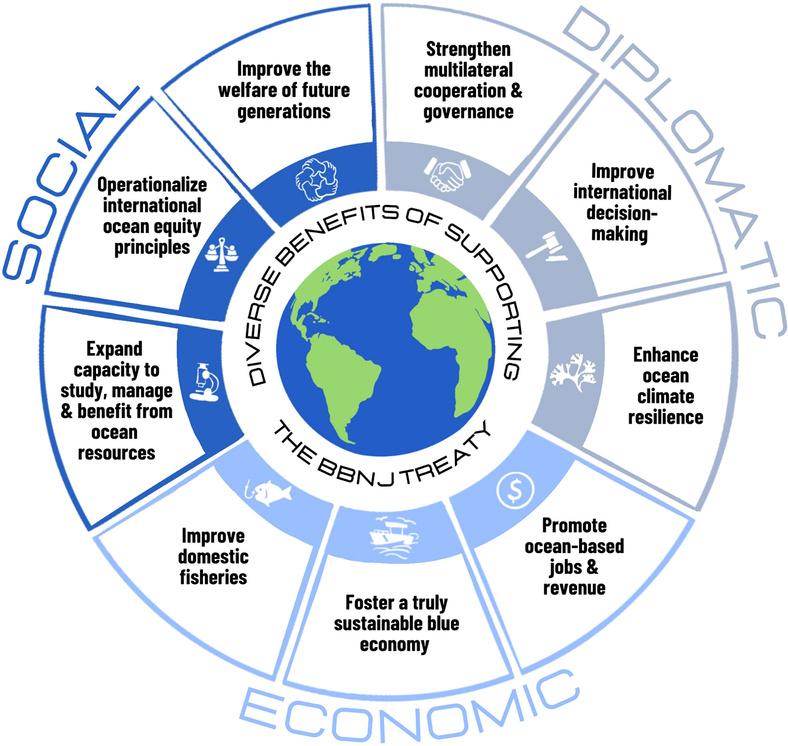


State parties are expected to incorporate BBNJ into their domestic laws to regulate activities "within their jurisdiction or control" in the Area Beyond National Jurisdiction ("ABNJ").
Thus, BBNJ does not, by itself, bind private entities, but it does apply to activities carried out by such entities in the ABNJ within the jurisdiction or control of a State party to BBNJ. This may create confusion in situations where establishing clear
SOURCE: Front. Mar. Sci., 25 August 2022; Sec. Marine Affairs and Policy; Volume 9 – 2022;
Page 36 - Issue 10
links between the activity and the State party is challenging, such as when activities are carried out by non-flagged private entities. Stakeholders should anticipate further developments in the law regarding this matter.
Human activities such as discharging plastic waste and untreated wastewater, overfishing leading to the depletion of fish stocks, the creation of dead zones due to nutrient pollution, and climate change have already severely damaged key ecosystems.
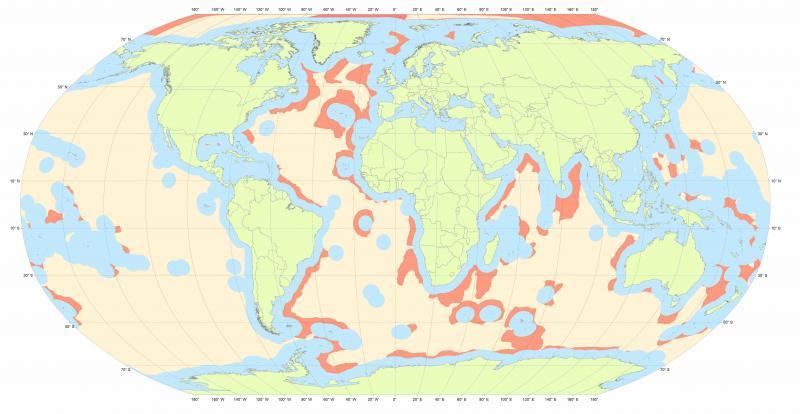
The International Maritime Organization (IMO) and the United Nations have emphasized the urgent need to protect deep-sea oceans to achieve the 2030 Sustainable Development Agenda, particularly Goal 14: Life Below Water. As critical stakeholders, we must identify and fulfil our role in the effective implementation of BBNJ."


Page 37 - Issue 10
SOURCE: Areas beyond 200M (blue) which are subject to BBNJ obligations. Seafloor areas of Continental Shelf beyond 200M (shaded) are subject to Part VI of UN Convention on the Law of the Sea (UNCLOS) whereas the water column above will be subject to BBNJ.
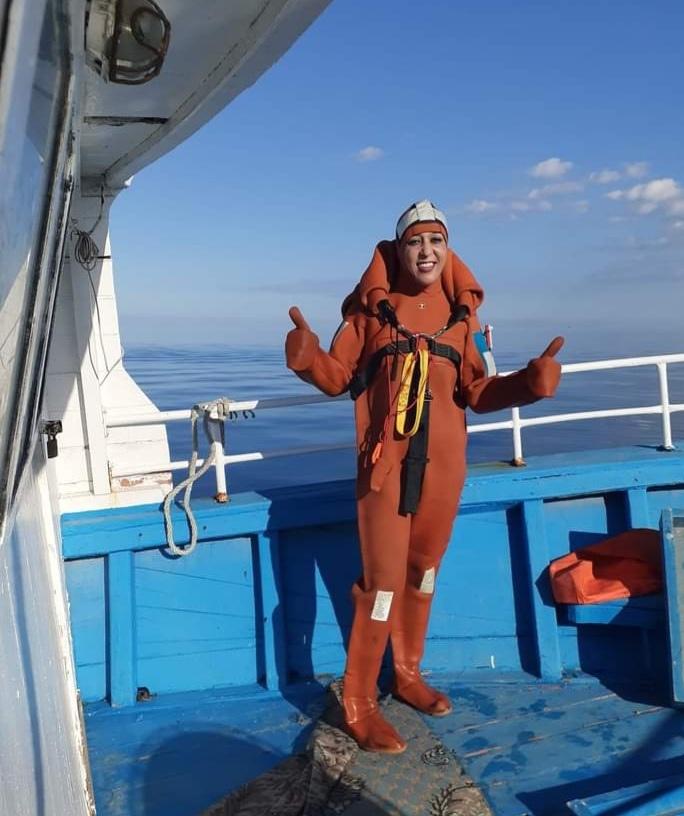
Sana Asma Abbadi
Poetry Corner
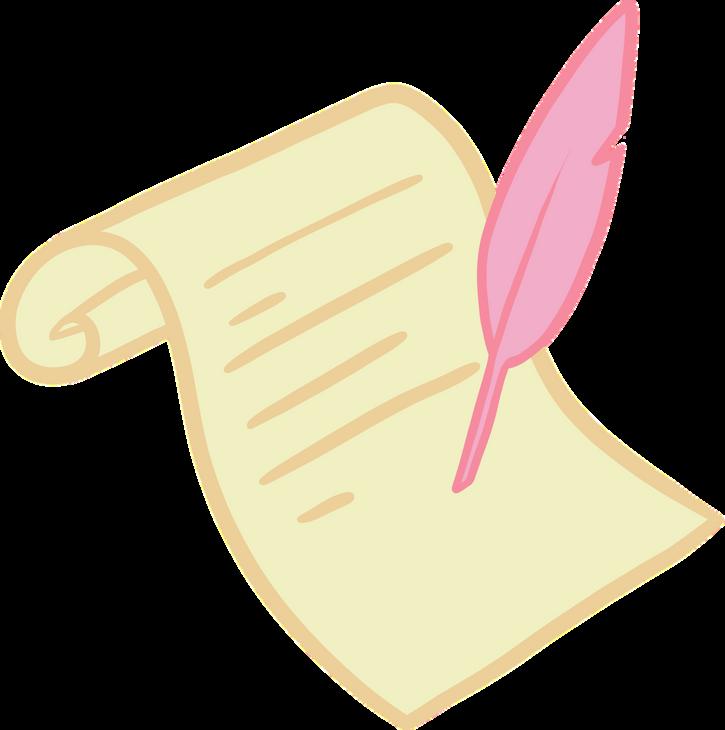
LIFE AS A SEAFARER

I have often wondered what lies beneath the sea; beyond the depths of mysteries, in search of treasures that will power our new reality.
Concealed to many, yet with much to explore; gentle creatures wander galore and many predators seethe throughout the Seven Seas

Admiring the tides that shift by the moon, so full; yet looking up on deck, I find myself with a a glazed daze, calmed of the starry skies.
As I call out to the sea, I wait patiently for the waves to start breaking and crashing against the fair maiden’s bow.
Yet, I soon find a new day’s dawn; the sun is rising beyond the horizon with orange pinked skies complementing the ocean blue.

This is my view, as a she-farer of the sea, now, every day, and forevermore
Paige Gordon Director, International Business Development Nelvik Norsk Hydro Ltd.
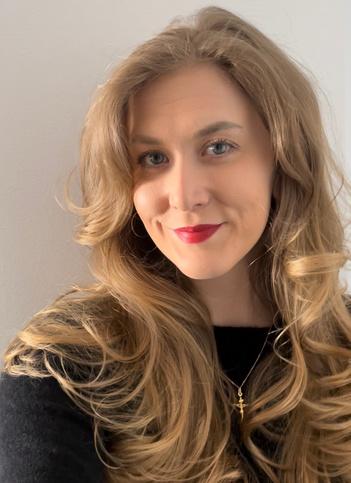
Page 39 - Issue 10
Community Special!
Let's read the responses from two of Maritime SheEO Ambassadors


First off, we hear from Lydia Ferrad who is a Seafarer. She is also a participant of Maritime SheEO's Leadership Accelerator Program (Cohort 2) and the Maritime SheEO Community Country Ambassador - Algeria.
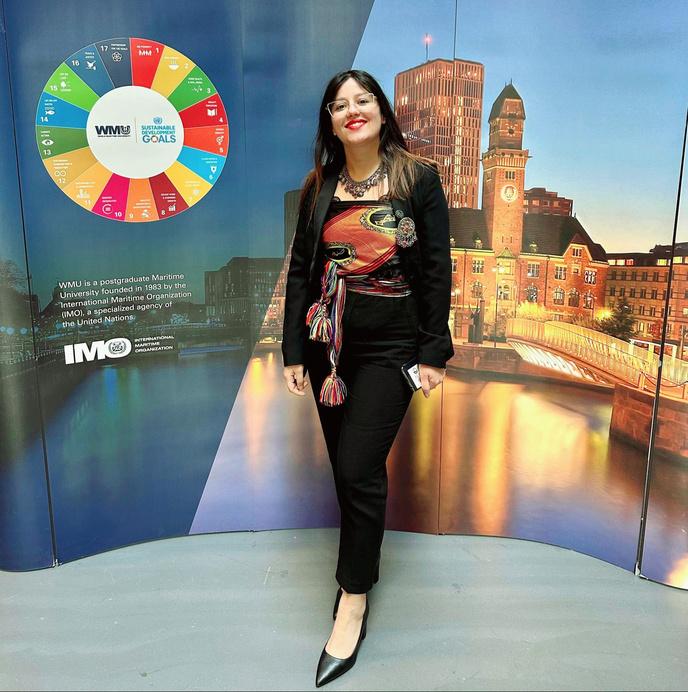
To be a woman seafarer is more than just choosing a career path that appeals to you; it means accepting a role in which women have historically been underrepresented and must overcome particular difficulties. While it does involve following our passion and doing a job that we enjoy, it also requires navigating a complex environment as a minority
It is embarking on a journey that goes beyond the confines of a typical career choice. It involves actively challenging societal norms, cultural expectations, and biases that have historically hindered women from entering the seafaring industry. By choosing this path, we become trailblazers, breaking down barriers and paving the way for future generations
It is a choice that demands resilience, determination, and perseverance. It requires fighting against deeply ingrained stereotypes and prejudices, both externally and internally This battle for acceptance can be long-term and arduous, as we often find ourselves proving our competencies and worth
repeatedly.
Moreover, women seafarers challenge not only the views of others but also our own selfperceptions We constantly push ourselves to exceed expectations, overcome self-doubt, and shatter personal limitations. By embracing the seafaring profession, we challenge the notion
Page 40 - Issue 10
"What does it means to be a woman seafarer?"
that certain careers are only suited for men, proving that gender should not dictate one's capabilities or choices.
Despite the challenges, being a women seafarer is ultimately about empowerment and self-expression. It is about defying stereotypes, forging a path in uncharted waters, and realizing one's potential By pursuing a career at sea, we not only fulfill our aspirations but also inspire and empower others to break free from societal constraints.

Community Special!
In summary, to be a women seafarer means to be a courageous individual who chooses to navigate a complex and male-dominated environment. It entails being a pioneer, challenging societal norms, and fighting for acceptance It involves an ongoing journey of self-discovery, resilience, and personal growth. Ultimately, it is about embracing a profession that aligns with our passion and dreams while paving the way for future generations of women in the seafaring industry
Let's hear what Nadin Said who is Egypt's first woman Marine Engineer has to say. She is also a participant of Maritime SheEO's Leadership Accelerator Program (Cohort 1) and the Maritime SheEO Community Country Engagement and LEAP Ambassador.
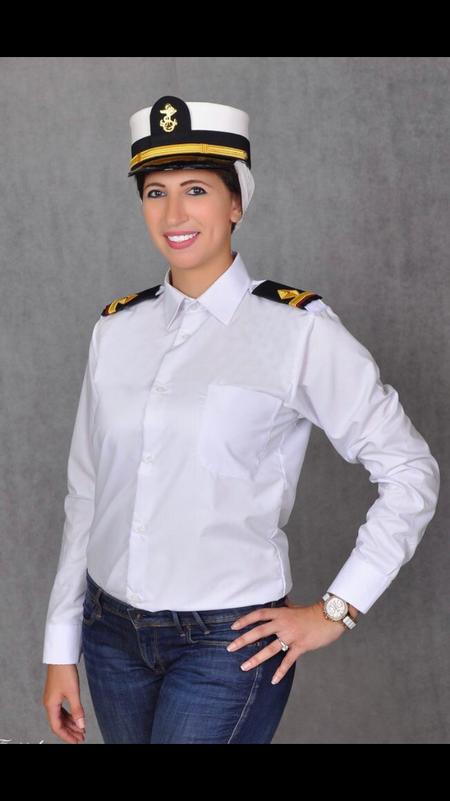
I would sum it up in 2 words which are uniqueness and fighter

Unique cause our job is special. We have an unusual responsibility and work environment. Fighter because we put up a fight from our first steps towards pursuing this career until we excel in it..
Being a woman seafarer means that you are going to say good bye to your family and friends and leave your home You will have two routines as you have 2 different lives - one onboard and the other offshore.
But being a woman seafarer is the most rewarding role one could ever take up
Page 41 - Issue 10
Embracing the Future: HIMT's Venture into the Metaverse and Virtual Reality Education
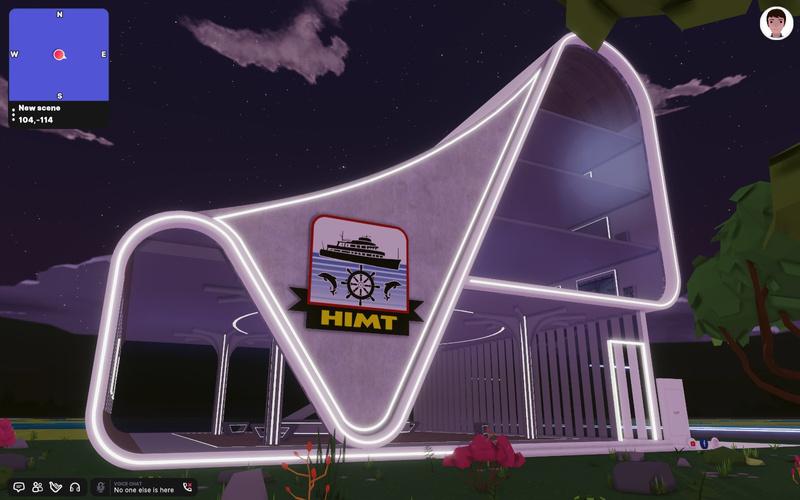
At HIMT, we are excited to explore the possibilities of the metaverse and virtual reality (VR) technology to enhance education and provide students with immersive learning experiences. We are happy to share with the She of Change readers our plans for both the metaverse and the Virtual Reality Lab, highlighting the opportunities, considerations, and strategies we are implementing.
We provide language support, technical assistance, and resources to help students from different regions participate fully. While we embrace immersive learning experiences, we also prioritize safety. We have implemented safety protocols, monitor student behaviour, and offer support services for those who may experience negative effects from extended exposure to virtual environments.
The Metaverse:
Our decision to establish a campus in the metaverse stems from our belief in its transformative potential. While the technology is still in its nascent stage, we recognize the opportunities it offers, including access to new technologies, global networking, and the development of innovative teaching tools.
To harness this potential, we are adapting our curriculum to incorporate virtual simulations, interactive learning tools, and real-time
collaboration with students and instructors worldwide

We are also developing courses on digital literacy, online safety, and other relevant topics

To ensure the Metaverse campus is accessible and inclusive, we consider factors such as language, connectivity, and cultural diversity
To create realistic and engaging learning experiences, we have planned to integrate various technologies such as VR, augmented reality (AR), and interactive simulations into our metaverse campus.
Further, we employ surveys, focus groups, and other feedback mechanisms to assess the effectiveness of our metaverse training programs. Additionally, we are also investing in research and development to ensure our campus remains up-to-date with the latest technological advancements and educational best practices.
Page 42 - Issue 10
The Virtual Reality Lab and VR Modules:
In response to the challenges posed by COVID19, we have established a Virtual Reality Lab at HIMT. This lab allows our maritime students to experience realistic and immersive learning without the risks associated with traditional training methods. Through our VR Modules, we are redesigning existing courses to incorporate simulations and interactive exercises into the curriculum
We made Virtual Reality Modules accessible to all students by providing free modules on our website and 3D Animated Videos on our YouTube Channel
To ensure the safe and effective use of virtual environments, we provide regular training and support to students and instructors, offer guidance on the best practices and mandate necessary breaks during module usage.
Our Virtual Reality Lab utilizes a range of technologies, including VR hardware and software, 3D modelling and animation tools, and interactive simulations, to provide engaging learning experiences.

metrics, including student performance, faculty and student feedback, and data analysis on engagement and retention. We remain committed to ongoing research and development and collaboration with industry experts.
At HIMT, we are enthusiastic about the potential of the metaverse and virtual reality technology to revolutionize education

Collaboration with educational institutions, industry partners, and technology providers allows us to share resources, expertise, and best practices, enhancing the learning experience for our students.

To attract students and institutes, we utilize social media, online advertising, and seminars, offering free modules to provide a firsthand experience of the immersive learning environment.
By embracing these emerging technologies, we aim to provide students with immersive, interactive, and inclusive learning experiences. Through continuous improvement,
W
R
Voices of the Maritime SheEO Community
We asked our community members
In the vast expanse of the world's oceans, amidst the crashing waves and boundless horizons, lies a community of remarkable women who have woven their lives into the fabric of the maritime realm
“Voices of the Maritime SheEO Community” is a captivating collection of narrative stories written by these inspiring women from diverse backgrounds within the maritime community. With each tale, they offer a glimpse into their unique journeys, sharing their triumphs, challenges, and the profound wisdom gained from their experiences.
Within these pages, you will find tales of courage and resilience, as these women break barriers and shatter stereotypes. These stories transcend borders and cultures and will resonate with everyone.
These stories are a celebration of the resilience and indomitable spirit of maritime women a tribute to their achievements, struggles, and the pivotal role they play in shaping our understanding of the seas. They remind us that the maritime community is not solely the domain of men, but a rich tapestry woven by the collective strength and passion of all genders.
Ashlee's Journey at S&P Global Market Intelligence
In 2004, Ashlee embarked on an uncharted journey into the maritime sector. With little knowledge of shipping, aside from her frequent ferry crossings across the English Channel, she found herself joining Lloyds Register Fairplay as a Data Researcher, immersing herself in the subject matter.
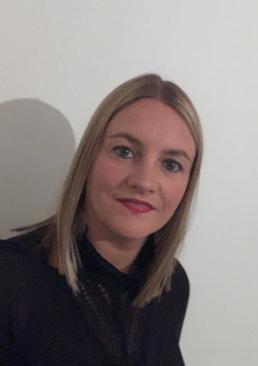
As the years passed, Ashlee's expertise grew, and she became a recognized expert and advisor to prestigious organizations such as the International Maritime Organization (IMO), the United Nations Economic Commission for Europe, and The Food and Agricultural Organization of the United Nations.
Ashlee Williams
Global Head of Data Operations, Global Intelligence & Analytics


S&P
Global Market Intelligence
Page 44 - Issue 10
Voices of the Maritime SheEO Community

She lent her insights to projects that focused on safety, security, digital transformation, and global trade facilitation. Her contributions even included the development and maintenance of industry standards.
Within her organization, Ashlee climbed the ranks swiftly, driven by her passion for equality and inclusion. In 2019, she founded Women in Maritime, a company that achieved Charter certification by Maritime UK for its tireless efforts in addressing gender fairness. The organization aimed to create an inclusive environment where every employee could bring their true selves to work.
Having risen through the ranks of a maledominated industry, Ashlee understood the challenges faced by others in similar situations. With authenticity, empathy, and adaptability, she became a trusted guide and mentor, both within her organization and beyond. She championed diversity, equity, and inclusion (DEI) in all aspects and actively sought ways to pay it forward.
Key initiatives were set in motion under Ashlee's guidance, aiming to retain women at senior levels and nurture a stronger pipeline of talent while fostering gender equality She spearheaded strategies for leadership that encouraged meaningful conversations about DEI, drawing on her multicultural experiences and developing measures that would amplify their impact across three crucial pillars: people, customers, and communities
Ashlee's dedication and efforts did not go unnoticed. In 2022, she found herself on the

Heroes Women Role Model List and was shortlisted for the prestigious Rising Star 'Champion' award by We Are The City, which recognized her commitment to supporting women and advancing gender equality.
As a global board representative of WINS Global (Women's Initiative for Networking and Success) at S&P Global, Ashlee ensured that communication strategies were in place to raise awareness about the value of diversity in the workplace. Serving as a role model, she inspired others of all genders, races, and ethnic backgrounds to succeed and thrive.
Ashlee also served as a dedicated member of the DEI Committee for the TPM DEI Honors Team. Alongside respected judges in the field, she acknowledged and celebrated the efforts of companies in the Transportation & Logistics sector committed to improving diversity, equity, and inclusion. Their collaborative work resulted in the publication of a whitepaper titled 'Towards an Inclusive Future,' which shared valuable insights and data from the submissions received in 2022
Beyond her professional accomplishments, Ashlee's commitment to empowering others extended to the community She completed a 12-month cycle of volunteering and mentoring for the 'Y's Girls program,' an initiative that offered early and effective mentoring to young females aged 9-14 in East Surrey.
And so, Ashlee's uncharted journey in the maritime sector has yielded great results, driven by her unwavering dedication to equality and inclusion.
Page 45 - Issue 10
Voices of the Maritime SheEO Community

My Journey In The Merchant Navy
My journey in the shipping world started in the year 2004. I am a very proud seafarer and I take a lot of pride in my work. It’s a very specialized profession and requires dedication, but the job satisfaction one gets is rewarding, with the added bonus of seeing new places, meeting and working with a diverse crew, and perfect sunsets You learn a lot about life, when at sea
Back then when I joined the merchant navy, there were not a lot of women seafarers around, so it became a learning experience for us, as well as the complement onboard
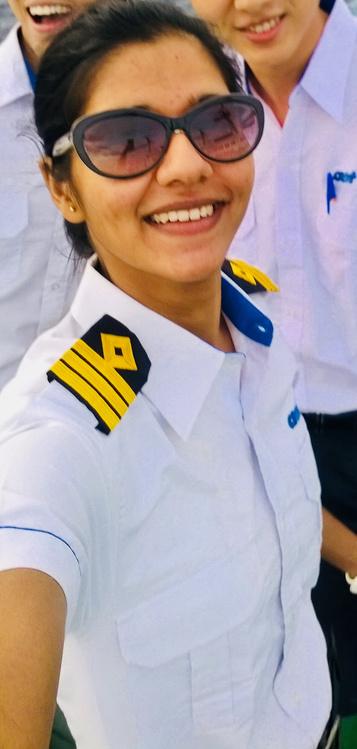
The training ashore was just a glimpse into the world of seafaring, but the experience onboard was significantly challenging.
We had to struggle through the constant skepticism of our competence, forcing us to work twice as hard to prove ourselves.
But then there were people who believed in us and wanted to see us succeed. And, they also worked twice (or maybe thrice) as hard on our training as we did.
I see a changed world now; people are more accepting of women officers and crew. They understand that we are all trained in the same institutes, and have the same competence irrespective of our gender.
Companies are working hard at providing an equal-opportunity workspace for all seafarers.
Our jobs require a constant commitment as it is not an easy one. Besides hardships onboard, the distance from family makes some days harder. Internet has made connecting easier.
My advice to the new generation joining this field is to do thorough research in the chosen field, and the levels of competency tests that are required at regular intervals. And, then if you decide a career at sea is for you, take the training period seriously.
When you gain knowledge you are just going to make your own life easier onboard. All of us need to be conversant with the Company’s policies and protocols, so as to take appropriate actions whenever the need arises.
Finally, to everyone planning to work at sea, welcome onboard! You are going to love it

Page 46 - Issue 10
Voices of the Maritime SheEO Community
My SheEO Coffee Networking
As a maritime lawyer from Brazil, I have always known that networking and connecting with other women in the industry is important.
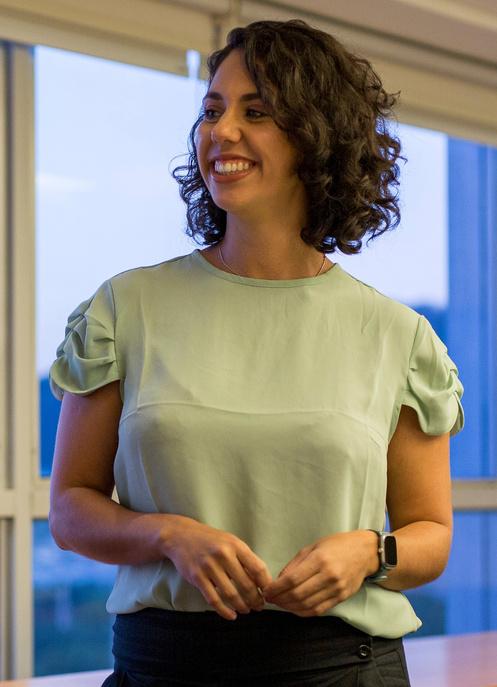
Fnding opportunities to expand my network on a global scale has been challenging, until I became an Ambassador of Maritime SheEO. Through this community, I have been inspired to take my networking efforts to the next level by connecting with fellow women in the field from all over the world

I have found the experience to be incredibly enriching, and each week, I make it a point to meet at least one member of the community.

By connecting with other women in the maritime industry, I have gained new insights and perspectives on the industry and formed connections with other women who share my passion for the maritime world
I had the opportunity to connect with Blessing
Iretioluwa Oloyede, a maritime lawyer from Nigeria who is part of Maritime SheEO's Leadership Accelerator Program (LEAP) We shared our experiences in LEAP, and have since then been rooting for each other.
I also had the pleasure of connecting with Sonali Mukherjee, a maritime lawyer from India. We found that our countries have a lot in common and we shared our challenges.
I also met with Hanan Kaffoura over a cup of
coffee She is from Syria and currently works as an expert at the High Council of Public Works of the Ministry of Transportation and Infrastructure in Rome, Italy. We discussed the need for more women to engage in discussions about the maritime industry and how we can work together to address important topics such as the maritime environment, energy and technological transition, and decarbonization of the shipping industry.
By connecting with other women in the maritime industry, I have found inspiration, support, and guidance. The Maritime SheEO Community has been an excellent resource, and I encourage all members to take advantage of the opportunity to network with other women in the industry. Together, we can make a difference and create a more sustainable and equitable future for the maritime industry
Page 47 - Issue 10
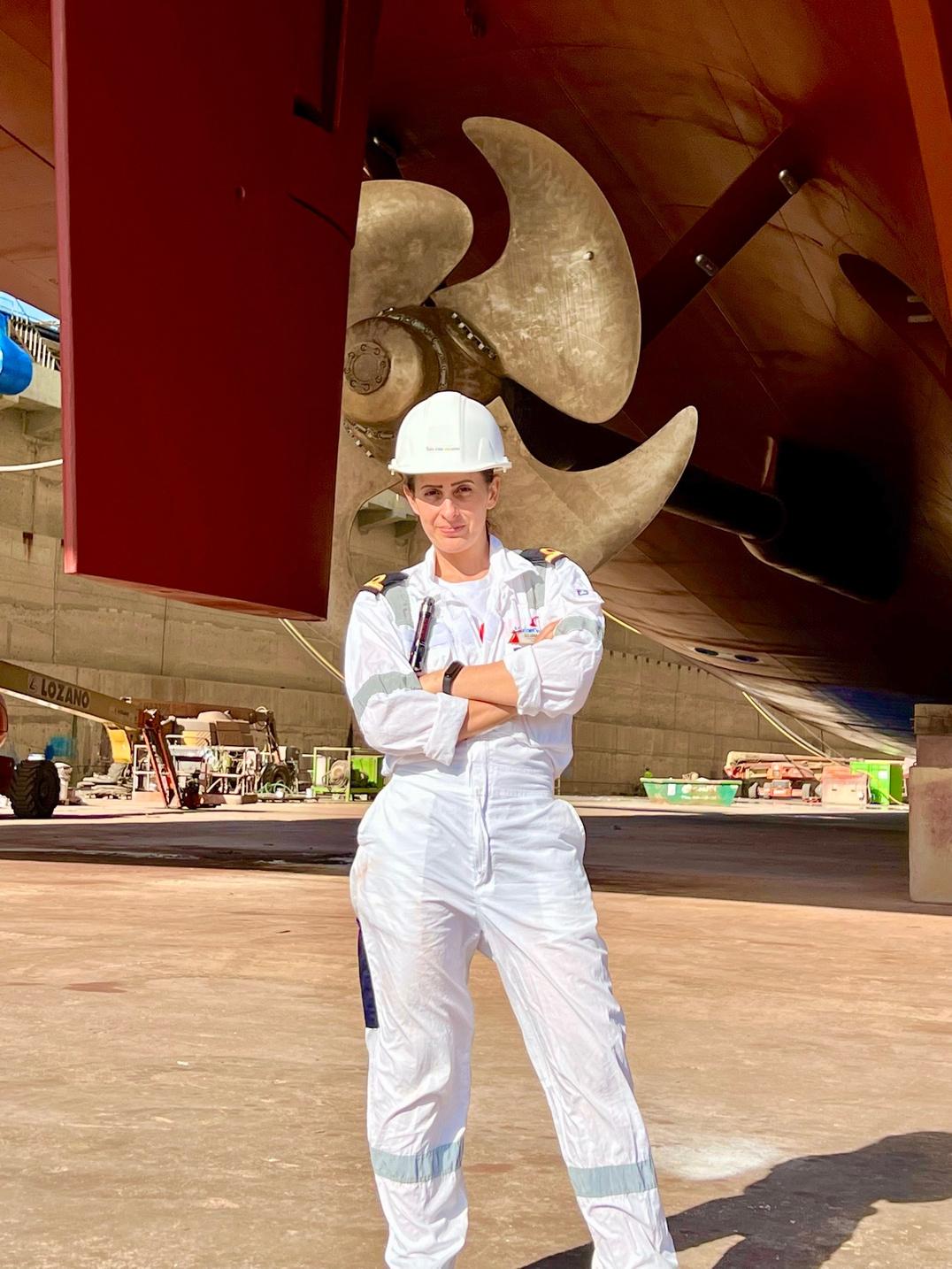 3E Juliana de Almeida
3E Juliana de Almeida
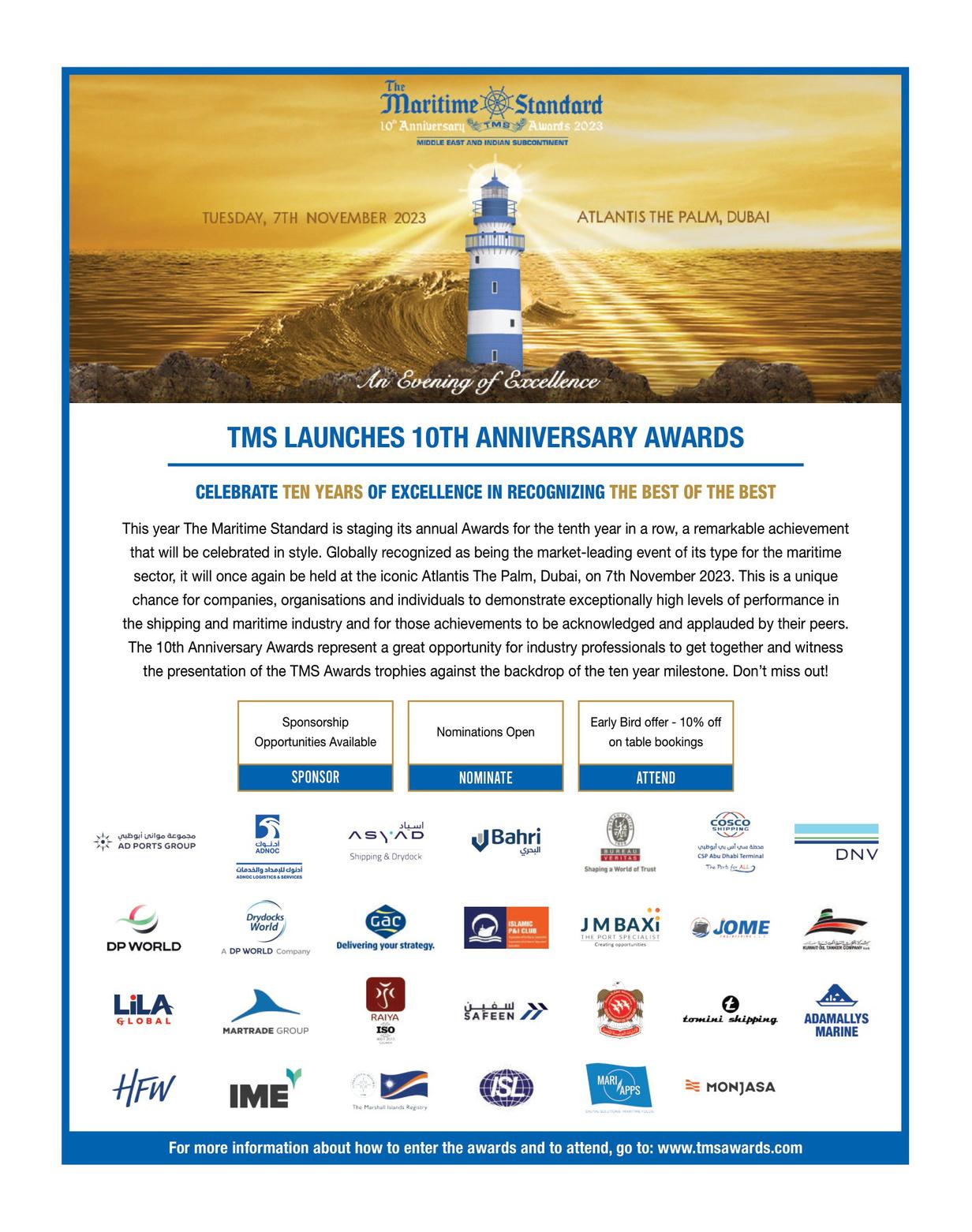
HARNESSING THE POWER OF ADVANCED SIMULATION TECHNOLOGIES IN MARITIME OPERATIONS
Siti Fariya
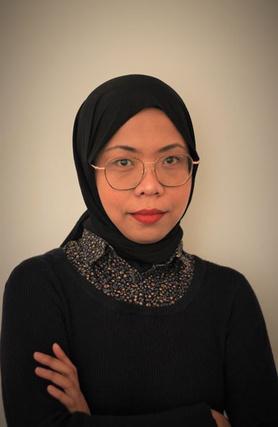
In an increasingly globalised world, ports play a vital role in the facilitation of international trade and maintaining economic growth As the volume of goods and maritime traffic continues to rise, port authorities and operators are faced with the challenge of enhancing their competitiveness while ensuring efficiency, safety, and sustainability
Advanced simulation techniques present cutting-edge solutions to address these challenges and transform the maritime landscape
Simulation can be used to analyse and optimise port operations, enabling stakeholders to evaluate the impact of infrastructure changes on bottlenecks, leading to improved decision-making.
By mimicking real-world scenarios in a controlled, virtual environment, simulation software allows for testing different strategies and configurations, minimising risks and potential costs associated with implementing changes in the actual port.
Emerging simulation applications combine aspects of urban networks and inner port area traffic to tackle congestion, a critical issue in port operations.
This approach models the movements of
individual vehicles, vessels, and cargo within the port and its surrounding road network. By simulating traffic flows and identifying potential bottlenecks, these applications can suggest strategies to tackle congestion and improve overall port throughput.
Advanced simulation models also incorporate environmental and sustainability considerations into port planning and operations. By simulating the impact of various strategies on emissions, energy consumption, and noise pollution, stakeholders can make informed decisions that balance economic growth with environmental stewardship.
Furthermore, simulations can be used to model the effects of extreme weather events or climate change on port infrastructure, helping


Page 50 - Issue 10
Knowledge Transfer Partnership Associate, Strategy and Corporate Planning Kent Business School & The Port of Dover
authorities develop resilient and adaptive strategies to safeguard the future competitiveness of their ports.

Another significant emerging advantage of simulation is the possibility of integrating realtime data from various sources, such as IoT devices, sensors, and traffic management systems. This enables the creation of dynamic simulations that continuously adapt to the evolving conditions within the port and its surroundings, providing timely and accurate information for decision-makers.
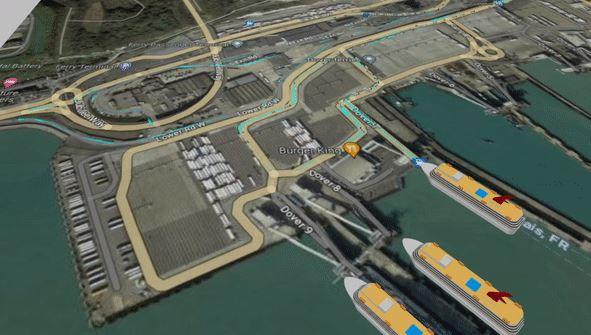
However, research is still needed for this benefit to become a reality with greater success possible when partnering ports with academic research in this field. As the maritime industry moves towards greater digitization and automation, the value of realtime simulations in enhancing port competitiveness is expected to grow exponentially.
In the context of these advancements, the Knowledge Transfer Partnership (KTP) project emerges as a pioneering initiative. A collaboration between Kent Business School and the Port of Dover, the KTP project is being spearheaded by a team of eminent experts:
Professor Kathy Kotiadis, Professor Jesse O'Hanley, from Kent Business School, along with Timothy van Vugt, Strategy Manager and Christian Pyrce, Chief Commercial Officer the Port of Dover.
The project leverages advanced simulation technologies in maritime operations, holding the immense potential to revolutionise port operations and enhance competitiveness.

To conclude, advanced simulation technologies hold the key to revolutionising port competitiveness in the face of evergrowing demands and challenges.
By enabling stakeholders to visualise, analyse, and optimise complex maritime operations, these tools pave the way for smarter, safer, and more sustainable ports that can thrive in the competitive global landscape.
Embracing and investing in these cutting-edge technologies is essential for port authorities and operators to stay ahead of the curve and secure their position as leaders in the maritime industry.
Page 51 - Issue 10
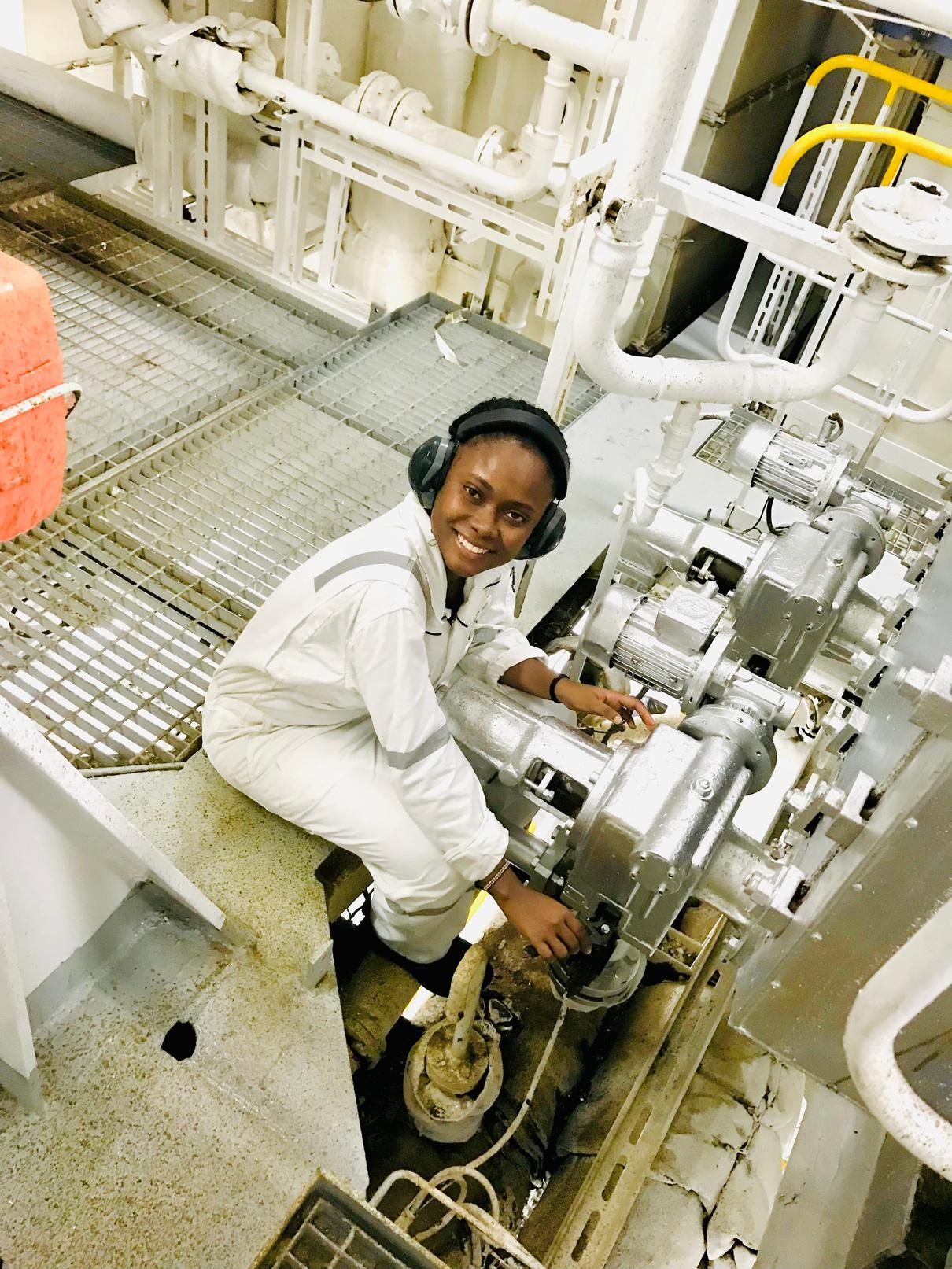 Engine Cadet A Faith Molaa
Engine Cadet A Faith Molaa

























































 AB Zamra Issa Ramadhan
AB Zamra Issa Ramadhan



















 3E Juliana de Almeida
3E Juliana de Almeida



 Engine Cadet A Faith Molaa
Engine Cadet A Faith Molaa